S COTLAND TRAVEL


The Scottish Travel Society Magazine


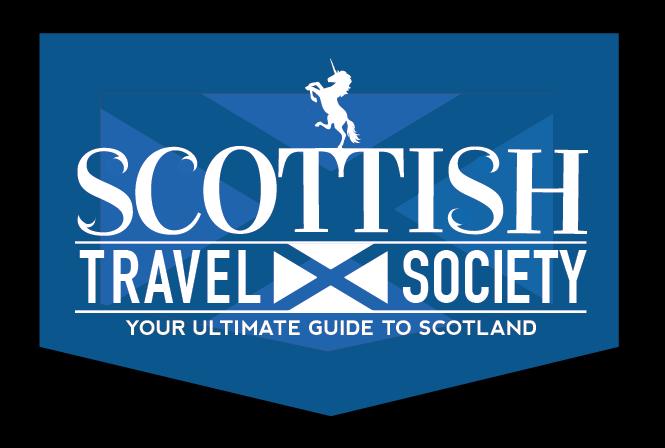

DRIVING IN SCOTLAND WHAT YOU NEED TO KNOW


Issue 1 Edition 1 March 2023
Travel Scotland magazine is produced and published by CQ International Publishing for, and on behalf of, Scottish Travel Society LLC. Design and layout by PeeJay Design Studios, UK. Cover photo courtesy of Photo by Matteo Badini: Pexels.com
Solicited, and unsolicited articles, contributions, photographs, images, and artworks regarding, or associated with Scotland, are welcome.
Email, STSmarketing@mail.com <<
Advertising, advertorials, marketing, and promotional enquiries to email below.
Advertising agents, and media buyers enquiries open. Standard commission rates apply.

Email CQinternational@mail.com
Travel Scotland magazine is produced and published by CQ International Publishing for, and on behalf of, The Scottish Travel Society LLC.

The opinions expressed in Travel Scotland magazine are those of the authors, journalists, and contributors and do not necessarily reflect the opinions of CQ International publishing, or The Scottish Travel Society, or its Editors.
Information contained in the Travel Scotland magazine is from sources believed to be reliable, many of which are transcribed directly from varied sources and should be considered for information, and or entertainment purposes, only.

Neither CQ International Publishing, nor The Scottish Travel Society guarantees the accuracy or completeness of any information published within Travel Scotland magazine and neither CQ International publishing, or The Scottish Travel Society, nor its contributors, journalists, or editors, shall be responsible for any errors, omissions, or claims for damages, including exemplary damages, arising out of use, inability to use, or with regard to the accuracy or sufficiency of the information contained in Travel Scotland magazine or any associated publications.
Paid advertisements appear in Travel Scotland magazine. CQ International Publishing and The Scottish Travel Society do not evaluate advertised products,
services, or companies, nor any or all claims made in any advertisement, promotion, or marketing, or by any advertiser. Advertisers making claims are expected to have research data that substantiates these claims. Advertising does not influence editorial decisions or content. CQ International Publishing reserves the right to refuse, reject, or cancel any advertisement, promotion, or marketing content for any reason, at any time, without liability.
© CQ International Publishing 2023 ALL RIGHTS RESERVED

No part of this publication may be reproduced, distributed, or transmitted in any form or by any means, including photocopying, recording, or other electronic or mechanical methods, or for digital controlled lending, without the prior written permission of the publisher, except in the case of brief quotations embodied in critical reviews and certain other non-commercial uses permitted by copyright law.
CQinternational@mail.com
2
>>
TRAVEL SCOTLAND
Making your life easier
LINKS

Embedded hyperlinks in this magazine allow you to simply ‘click’ on them to be taken to the Website, Product, or Service you require.

A link may look like this: https://scottishtravelsociety.com

Or this , Click HERE
Both work the same way.
In addition, most advertisements are embedded with links. Just click on the advert to go to the website. For example, on page 20, Highland Celtic Art, have an advert. This is it...

3
Loch Ness Circular and Inverness

After collection from your hotel/cruise ship, we head to Clava Cairns , this 4,000 year old burial place provided inspiration to Diana Gabaldon for her Outlander series of films and books.
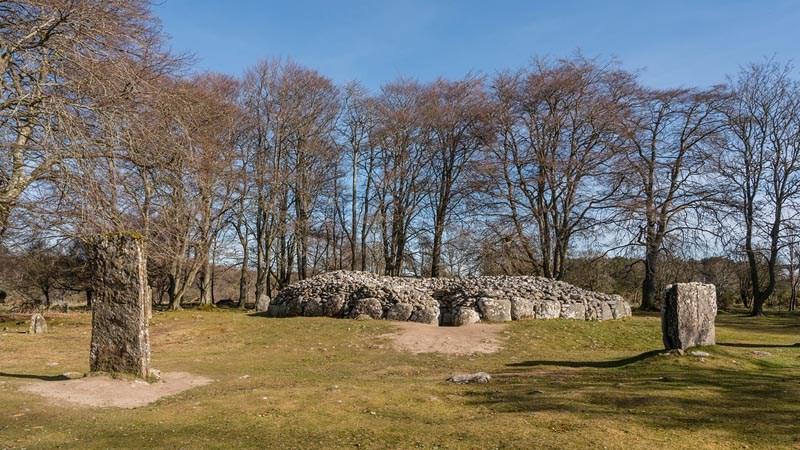
Heading on, to Culloden Battlefield we pass the Cumberland stone on our way and reach the battlefield where, on the 16th April 1746, the last fought pitched battle in the English took place. The result of which changed the way of life in the Highlands forever.
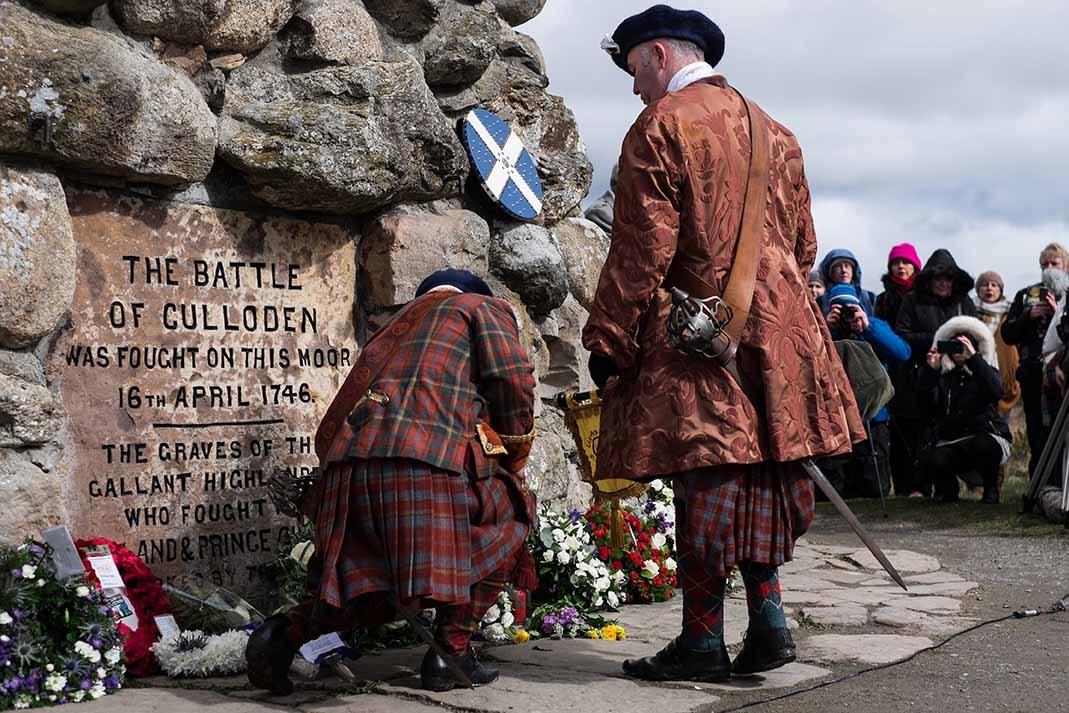
Heading in to Inverness, we pass Inverness castle, and the statue of Flora Macdonald, famous for helping Bonnie Prince Charlie escape after the battle of Culloden.
Passing by Inverness Cathedral along the side of the river Ness, we pass Tomnahurich Hill, which is also known as The Hill of the Fairies.
We stop briefly at Dochgarroch, to see some magnificent Highland cows before continuing to Loch Ness.
Along Loch Ness side, we stop at the Wellington layby and continue on to Urquhart castle, one of the most photographed castles in Scotland.
Our next stop is at Invermoriston Falls, before we reach Fort Augustus , one of three forts built to suppress the Jacobite uprisings. After lunch, in Fort Augustus, we head back to Inverness on the south side of Loch Ness, and climb up to the top of Glendoe to the Suidhe viewpoint from where, on a clear day, you will get magnificent views down to Stratherrick, and Strathnairn. Visits to the Falls of Foyers, and then Dores Beach are our final stops before we return you to your Hotel/Cruise ship.
Duration: 8-9 Hours. Private tour: for 4 people max. Note: This tour is not suitable for wheelchair users due to the Falls of Foyers, and Urquhart castle locations being inaccessible for wheelchairs.



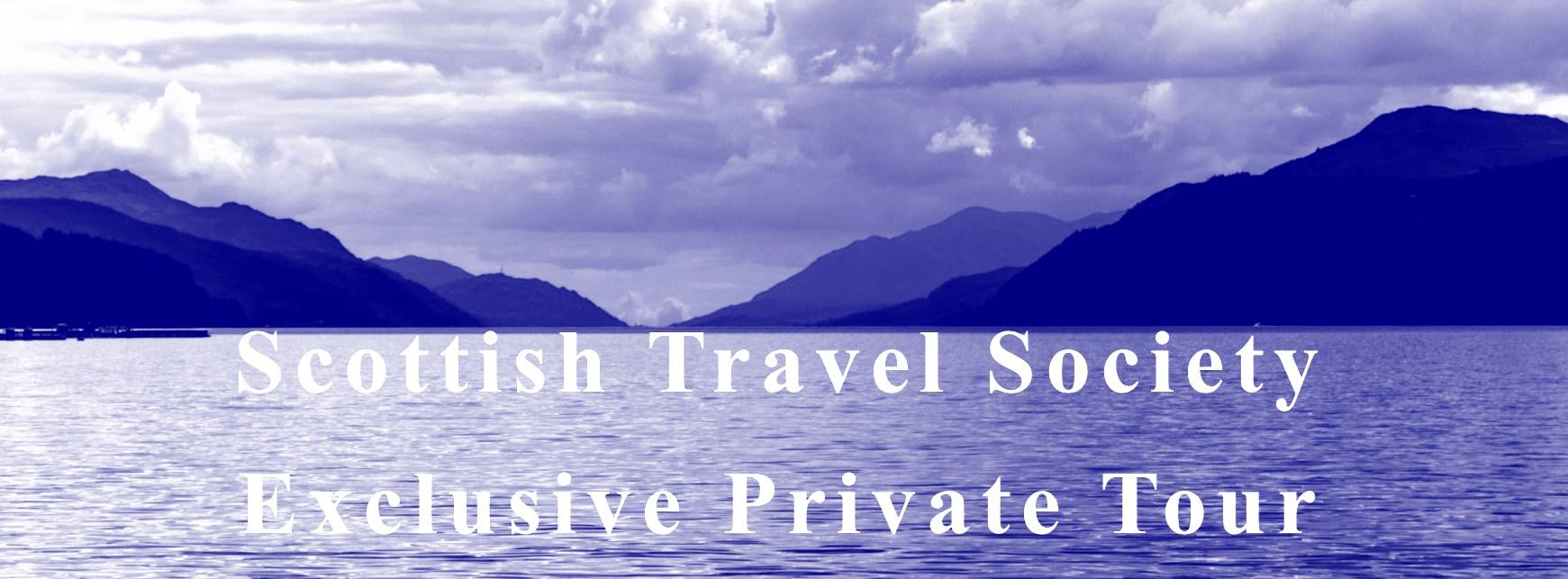
For full details click

4
Contents
Page 7 A message from the Editor
Page 9 Off the beaten track, hidden gems no1

Page 11 Scottish Tablet
Page 15 In the land of Wild Geese, Kelpies, and Air Trees
Page 19 Digital connectivity
Page 23 Salann na mara
Page 28 Public transport
Page 29 What’s in your sporran?
Page 33 Scotland – A weather guide
Page 39 Traveling Scotland by Train
Page 43 New beavers at Loch Lomond
Page 44 Write to Ruby
Page 47 Money Matters
Page 49 My day in the job as a Tour Guide
Page 55 Driving in Scotland, what you Need to Know
Page 59 Unforgotten Highland Women
PAGE 63 Finding Daisy
Page 69 Focus on Elgin
RANDOM FACT
The main languages in Scotland are English, Gaelic, Scots, and British sign language, but there are over 170 languages spoken here.
5

A message from the Editor

Welcome to the first edition of Travel Scotland magazine, brought to you by the Scottish Travel Society
Travel Scotland is brimming with articles and information to help you enjoy our wonderful country and get the best out of your visit be it a road trip, an island hop, a weekend break, a guided tour, or a vacation in a country cottage or city hotel.
Whatever style of holiday you choose, Travel Scotland has ideas, advice, tips, and suggestions to help you plan and enjoy your stay.
In this issue, there is a driving guide to help belay any worries you may have when renting a vehicle, and a personal account, full of good advice, for travel by rail.
We also feature the town of Elgin, along with revealing one of Scotland’s hidden gems. Plus, there are helpful insights into our money, the country's digital connectivity, and the weather.
All things worth knowing when you travel in Scotland.
Besides travel information, Travel Scotland magazine includes articles about wildlife, and historic highlights, along with news stories.
There really is something for everyone between these covers.
What is more, Travel Scotland is FREE to read. No subscription is needed, simply click on the ‘Follow’ button below to ensure you do not miss all the good stuff we have to share with you in the next edition.
Travel Scotland magazine is published in the Spring, Summer, and Winter .

As a lover of Scotland, we hope you will join our clan, the Scottish Travel Society Facebook Community, where you can connect and engage with our community about all things Scottish and Scotland related. Feel free to ask questions, comment, and join in the fun.
https://www.facebook.com/groups/ScottishTravel
You will find the Scottish Travel Society a warm, welcoming, and helpful community. We look forward to seeing you there.
7
The Seafood Shack: Food & Tales from Ullapool
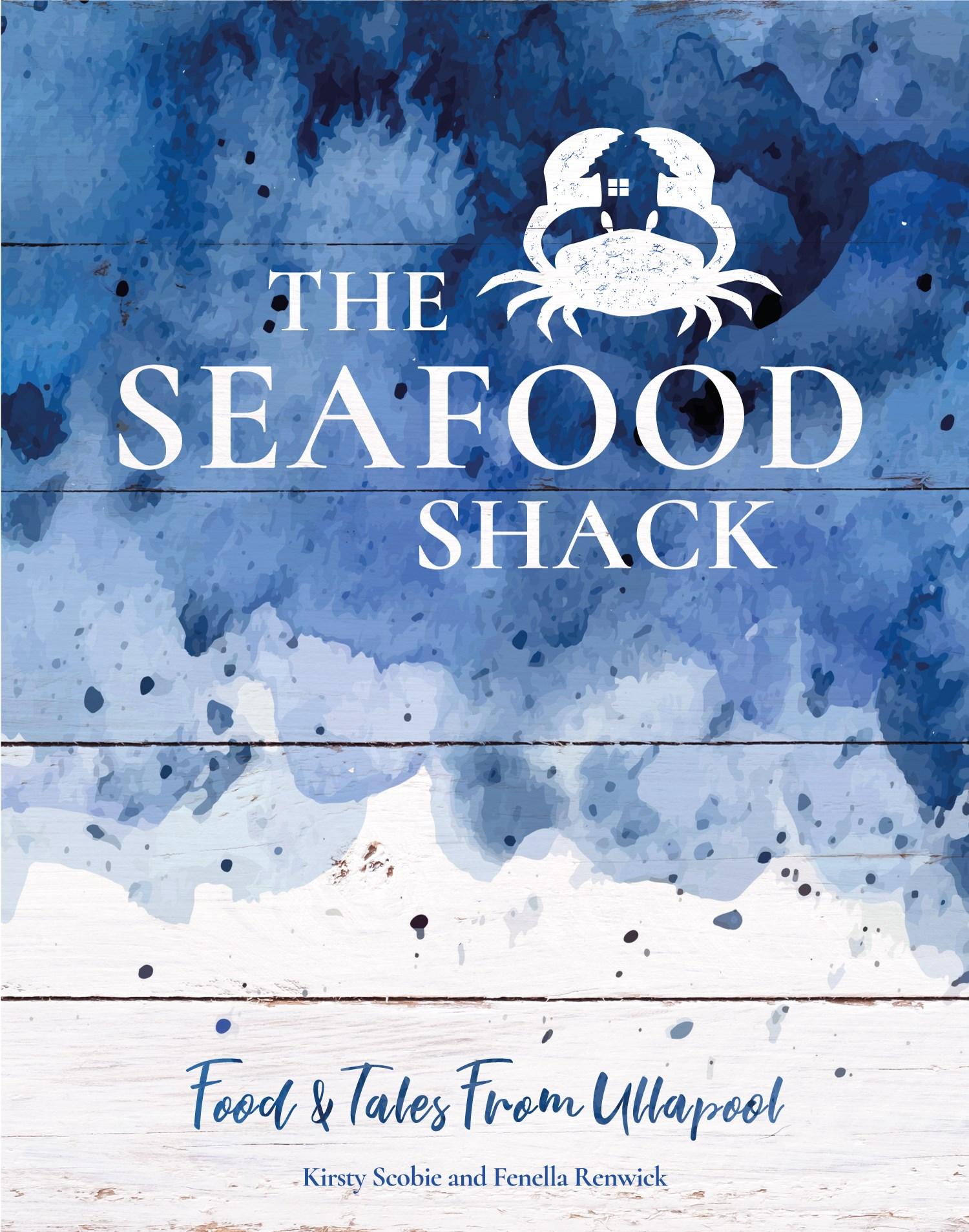
The Seafood Shack is a small but mighty catering trailer in Ullapool on the west coast of Scotland. It's here that Kirsty Scobie and Fenella Renwick take whatever their fishermen friends bring them each morning and serve it up for a crowd of locals and tourists.

The Seafood Shack’s recipe book bursting with delicious seafood recipes and lovely local stories. Discover how easy it is to cook mouthwatering seafood with over 80 down-to-earth recipes, plus essential tips on how to prepare, dissect, fillet, and cook white fish, smoked, and shellfish. Ullapool provides us with local boats that fish daily for the produce they serve.
“There is such a great sense of community here, and we have been so lucky to be supported through thick and thin by the locals. That’s why we wanted Ullapool to be part of the book, it wouldn’t make sense if it wasn’t.”
Whether it's their signature haddock wrap for a mid-week dinner or their garlic & thyme langoustines for a weekend part treat, this is food that is simple and quick, but more importantly fresh, delicious to eat and an absolute joy to cook.
Winner of 2021 National Geographic Traveller Reader Award for 'Best Food & Travel Book'
Shortlisted for the Guild of Food Writers First Book and Single Subject Book Awards 2021


Gourmand Cookbook Award Winner 2020
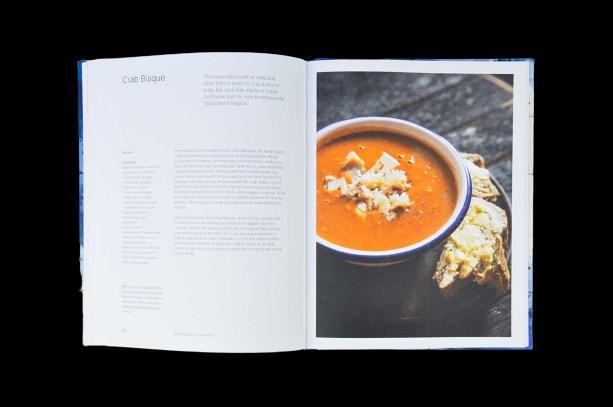
Winner of the Jane Grigson Trust Award 2020
Grab your copy now, https://amzn.to/3G34Syl
8
Offthebeatentrack,hiddengemsno1
Glencoul bothy
If you are looking for a place to visit in Scotland which is ‘off the beaten track’ here is one of the besthidden gems we know.
The Scottish Travel Society loves to encourage people to venture further than the regular, routine, and welltrodden tourist routes.


We are letting you in on a few ‘secret’ places. We will write about one or two of them in each issue of Travel Scotland magazine.

If you add just one of these non-touristy locations to your itinerary, you will experience a part of Scotland few visitors do, and by doing so you will get to see, and feel, the real Scotland.
Not all the places mentioned are easy to reach. Some may require you to hike, or paddle, to reach them. To get to others you may need to hire a car and drive for some miles. Yet the effort will make the journey even more special. Nothing as wonderful as these destinations come to the tentative traveller.
In this issue, we focus on Loch Glencoul Bothy, Assynt
Glencoul bothy is situated nearby to the islets Eilean na Moine and Eilean na Coille.
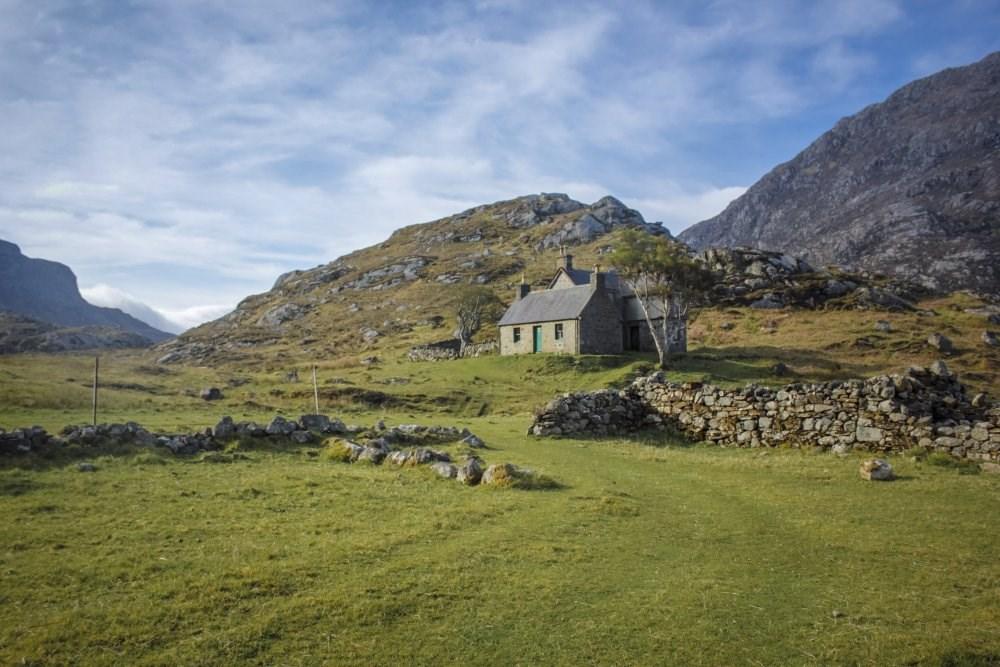
The bothy that sits at the head of Loch Glencoul is one of the best-kept secrets in Scotland. You can gaze out to the loch from the parking area at Kylesku bridge, but the best views of the loch are from the bothy itself.
A trip to Glencoul bothy is suited to the adventurous. To get to the bothy you will need to walk from Inchnadamph, or Kylesku, a small, remote fishing hamlet in Sutherland in the Scottish Highlands, situated 3½ miles northwest of the Botyh, through some uneven and relatively rough terrain.
If you go via Inchnadamph, a hamlet in Assynt, Sutherland, is situated 5 miles south of the Bothy,


9
you will get to see the highest waterfall in the United Kingdom, Eas a' Chual Aluinn, with a sheer drop of 200 meters. It is situated 2 miles south of Glencoul Bothy.
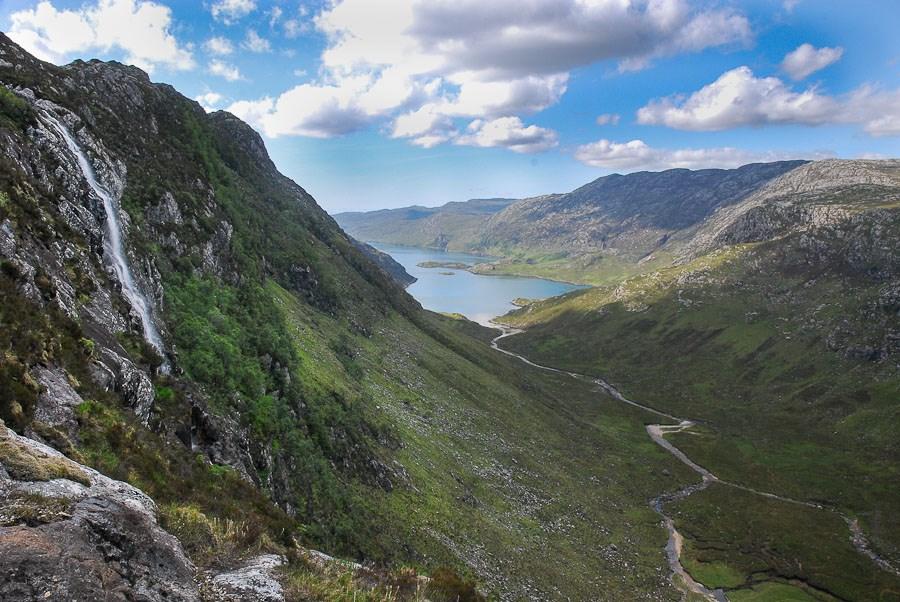
https://www.walkhighlands.co.uk/ullapool/ inchnadamph-kylestrome.shtml
If you are more adventurous, why not take a sea kayak or boat, (Kylesku Boat Tours have a tour of this area.) https://northwestseatours.co.uk/
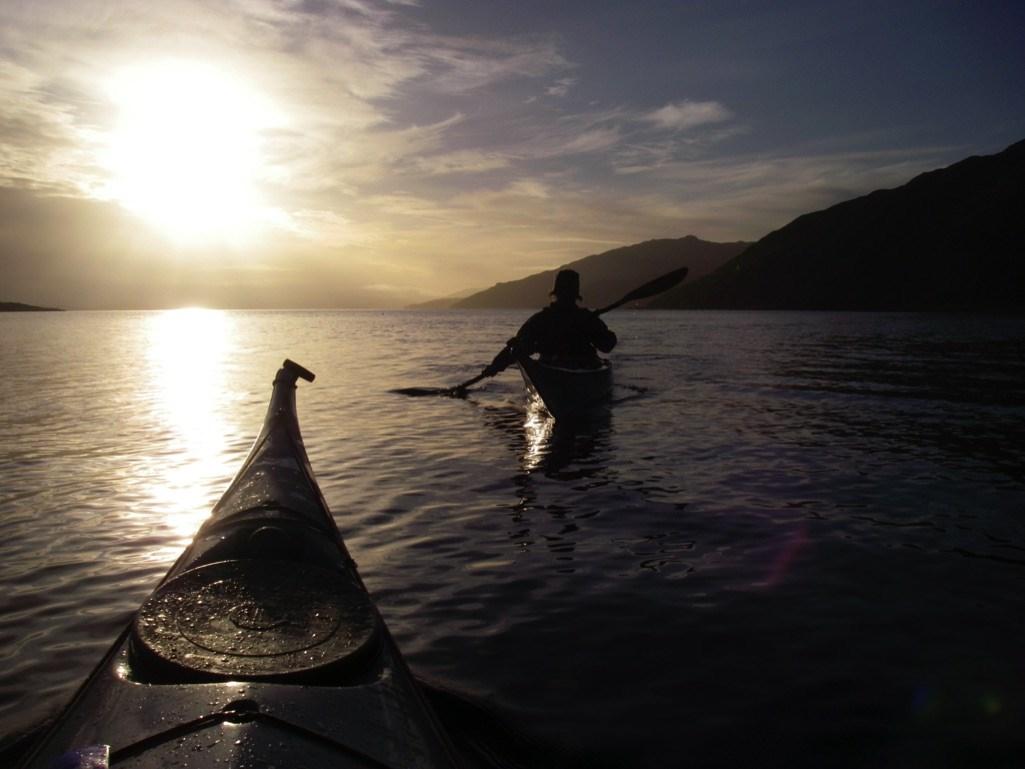
The effort will be well worth it. Although there are several fabulous bothies throughout Scotland, the location of Glencoul bothy makes it more exceptional as it is nestled between craggy mountains which offer the best view of Loch Glencoul at sunset.
The bothy is equipped with one bedroom that sleeps up to 6, and a common area with a fireplace. There are also abundant wild camping opportunities nearby.
If you like wildlife this is a great spot to see common and grey seals.
If you intend to visit the bothy you should contact the estate first and always follow the bothy code.
https://www.mountainbothies.org.uk/bothies/ bothy-code/
RANDOM FACT

There are more redheads in Scotland than anywhere else in the world.

10
Scottish Tablet
You cannot visit Scotland without trying some of the famous Tablet Tablet (or taiblet in Scots) is a medium-hard, melt in the mouth confection of Scottish origin.
Scottish Tablet has a long history, first noted in The Household Book of Lady Grisell Baillie in the early 18th century, that means it was already being eaten when she wrote down the formula. The traditional recipe used just sugar and cream. In modern times recipe condensed milk and butter is substituted for the cream, which has a tendency to burn when boiled.
Scottish Tablet is often flavoured with vanilla, whisky, or nuts.

Most commercially available Scottish tablet use fondant instead of the milk products and add
preservatives to prolong shelf life.
Tablet is occasionally referred to as Scottish, or Scots table,t or as Swiss Milk tablet, since some people call condensed milk ‘Swiss Milk’.
For many Scots, Tablet is their favourite confection, especially when home-made. Scottish Tablet is a traditional after dinner sweet, and graces many a Scottish wedding, or function, as the finale to a celebratory meal.
Some people will say that tablet is a form of fudge. However, proper tablet aficionados (and we have been doing a lot of sampling) explain there is a clear difference in texture between tablet and fudge. Fudge tends to be softer, while tablet has a grainier, and more brittle texture.
We realised that ‘grainier’ and ‘more brittle’ rarely sound like positives but in this case they most

11
definitely are.
There are recipes close to Scottish Tablet that are traditional to other countries. Sucre à la crème is a popular sweet creation in Quebec, Canada. However, its produced using cream and brown sugar rather than condensed milk and white sugar.
Latin America has a version of tablet, Dulce de Leche en Tabla, while in the Netherlands there is something close named Borstplaat. The latter can also be made using water rather than cream or condensed milk.
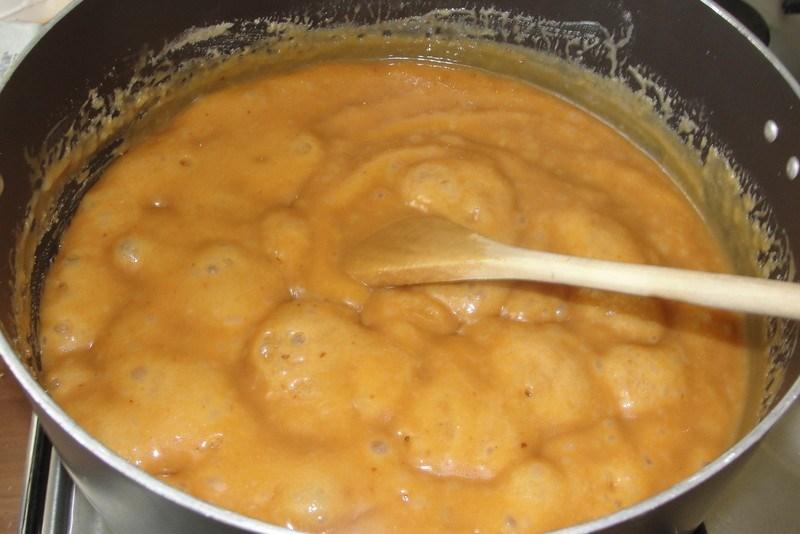

In New Zealand a sweet referred to as Russian
Fudge (although we cannot seem to find any reason why it’s called that and all recipes seem to originate in New Zealand), is essentially the same but with Golden Syrup added to it.
Scottish Tablet recipe.
NOTE:
It needs constant attention during its making, to ensure it does not ‘catch’ on the bottom of the pan; you will not be multitasking while you make Tablet. You will need to devote your full attention to as you need to constantly stir the mixture while cooking it to make it work.
12
Random Fact Glasgow is Scotland’s largest and was the UK's first UNESCO City of Music.
Metric
900 g Caster Sugar
250 ml Full-fat Milk
110 g Butter
397 g Condensed Milk
Method

Place the sugar and milk in a large pan over a gentle heat. Stir occasionally until all the sugar has dissolved. Pre-grease a 13x9 inch tin with a generous amount of butter and set aside.
Once the sugar has completely dissolved, add the butter allowing it to melt into the sweetened milk. Then add the condensed milk, mixing well.
Increase the heat and stir continuously while the mixture boils and reaches Soft-Ball stage (120°c) on your sugar thermometer.
Grab this classic sugar thermometer if you don’t have one,

https://amzn.to/3i2A09c
American
4 1/2 cups Sugar
1 cup + 1 Tablespoon Whole Milk
1/4 cup plus 1/2 Tablespoon of Butter
1 1/3 cups sweetened condensed
Remove the pan from the heat, allow the mixture to settle a little before beating.
Beat with a wooden spoon in the pan until the mixture is almost setting. It generally takes a good bit of beating.
Transfer to your pre-greased tray, and spread evenly to the edges and corners.

Leave to set for a minimum of two hours but ideally overnight.
If you want neatly cut squares or bars of Tablet, score your tablet to your desired size and shape about 30 minutes into resting.
Or, once fully set, you can simply break the tablet for a more rustic feel.
We found the perfect sized baking dish for tablet.
https://amzn.to/3GwppNt
Ways to die in Glasgow
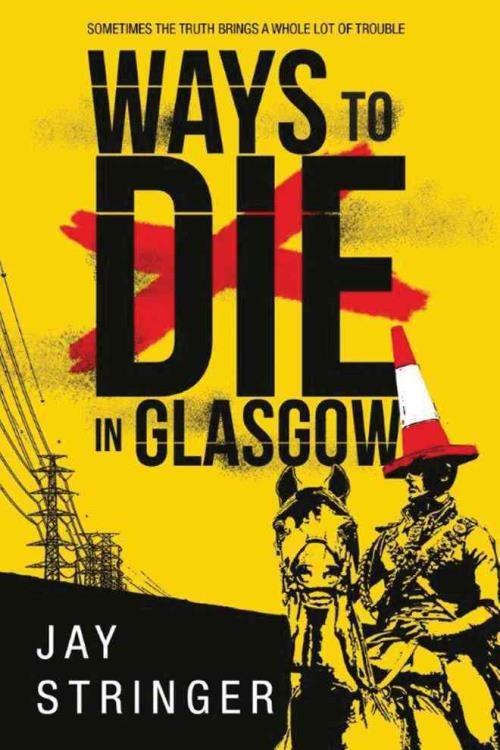
A wickedly dark comedy
A violent drunk with a broken heart, Mackie looks for love in all the wrong places. When two hit men catch him with his pants down, he barely makes it out alive. Worse still, his ex -gangster uncle, Rab, has vanished, leaving him an empty house and a dead dog.
Reluctant PI Sam Ireland is hired by hotshot lawyers to track Rab but is getting nothing except blank stares and slammed doors. As she scours the dive bars, the dregs of Glasgow start to take notice.

DI Andy Lambert is a cop in the middle of an endless shift. A body washes up, and the city seems to shiver in fear; looks like it’s up to Lambert to clean up after the lowlifes again.
As a rampaging Mackie hunts his uncle, the scum of the city come out to play. And they play dirty. It seems everyone has a dark secret, or a death wish. In Mackie’s case, it might just be both.
https://amzn.to/3VCAFvI

14
In the land of Wild Geese, Kelpies, and Air Trees
An article by Paul

Way back in 2017, I took some ‘time out’ and travelled to Scotland.
I have visited three or four cities in Scotland before now, but they were 'flying visits', the emphasis on such trips was not one of a tourist.
For this journey, I simply got in the car and drove north.
To be honest, I was a little more organised than that, or rather, my wife was organised. We packed clothing, food, soft drinks, a camping stove, pans, and other stuff I had no idea we ‘might’ need.
My wife said these things were “just in case we got lost or decided to stay out in the wilds overnight.”
To all intents and purposes, and in my own mind, we just drove to Scotland on a whim, which is almost true, because the entire idea, from initial concept through to leaving home took about three days in total.
We had no real destination in mind, so decided to head for the West Highlands and pointed the car in the rough direction towards Loch Lomond and Loch Awe.

Our first overnight stop was in Drymen, a wonderful B&B called Dunroamin, (They have selfcatering, and lodges as options.)
I have now stayed here several time and intend to return in the future. https://stayatdunroamin.com/

15
My wife and I are seasoned travellers. We have strayed from our little suburban home in England as far as Australia, Hong Kong, South Africa, and United Arab Emirates (all seven of them). We have been from to Florida, not only to visit the mouse, but to relax on the Keys where we ventured to the southernmost part of mainland USA. I think we have visited, at least on one occasion, every country which has a coast on the Mediterranean Sea. We have been to Brazil, Jamaica, Antigua, and Barbuda (wonderful pink beach), and several other Caribbean islands, to name-drop a few places.
I count myself lucky.
Yet, I can say, for all the beauty and excitement, the
amazing experiences and sights I have seen in those far-flung and exotic places, I was totally blown away by the scenery in Scotland, the hills, rivers, mountains, lakes…. sorry Lochs…are absolutely stunning. Why I never before took the time to simply ‘drive north’ a few hundred miles from my home, I do not know; probably because it is so close, and so simple a thing, I have never bothered. I mean, if something is that close to your home it must be boring, right?
WRONG.
The raw, natural beauty of Scotland encompasses every thought and notion I have scribbled about in my other travelling writings. But all the more so, the warm,

16
Sunset: Loch Lomond
friendly, welcoming, helpful, and humorous nature of the people made my visit amazing.
What did I do while I was there? I hear you ask.
Well, apart from walking inside a Hollow Mountain, Flying birds of Prey, Dining alfresco on the banks of Loch Lomond while watching the sunset, stumbling over a hidden Waterfall of Granite rocks and White Rapids, finding out where the Air Tree grows, walking through forests of lichencovered trees, which grow out of rocks that glisten silver and gold, watching a great wheel lift boats high into the air and deposit them in a canal on a hilltop, I visited the slowest Whisky distillery in the world. I drove on those quiet single-lane roads through some of the most amazing vistas in the entire world, I even walked amongst ,Kelpies, and lived to tell the tale.
I did all this, and on this trip I was only in Scotland for a few days.
So, I am going back to Scotland this summer. I want to do many other things and see the places I never had time to visit, on this short trip.
I plan to travel further North, along the wild West coast, visit some of the islands, and allow the fresh clean air, and crystal-clear waters, to wash the debris of daily life from my soul.
I could go into far more detail about this trip… (if are you reading this Scottish tourist
board? I am open to commissions!)... but alas, my wife calls my name, it is time to eat my evening meal so, I shall finish by saying, "Please put Scotland on your bucket list. Include it under ‘Places to see before you die’, but do not leave it too long, because I am sure you will want to return again, and again, and again."
NOTE:

I originally wrote this blog post in 2017. Since which I have returned to Scotland on many occasions. Sadly, my wife passed away on Easter Saturday 2021.

My following trip, later in 2021, was with my son to scatter her ashes among the sand dunes on a beach in Kintyre, a place we called special.
I shall, however, keep visiting Scotland as there is no other place on earth that holds such beauty, in so many ways, and in such abundance.
17

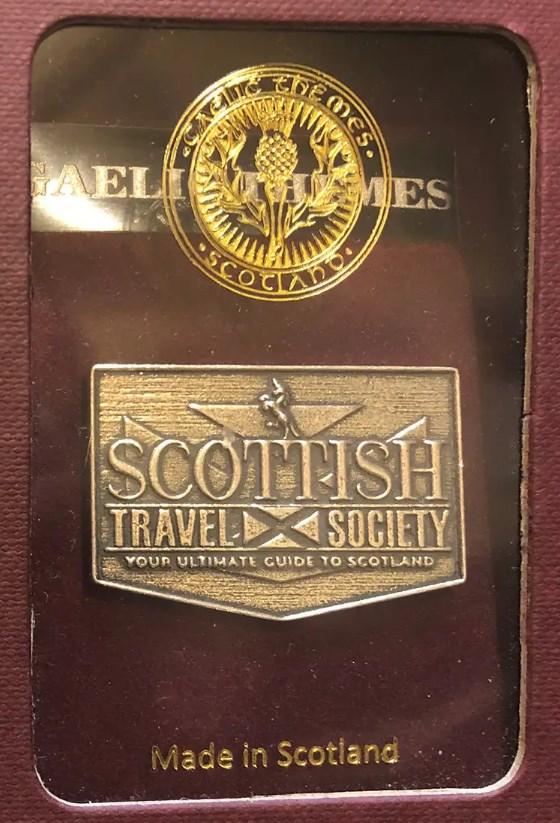


18 Made in Scotland Aged Silver High Quality Die Struck Scottish Travel Society Lapel Pin Badge with Butterfly Clutch. Antique Finish. Order online from the STS website CLICK HERE Only $14.99 each (plus shipping & tax) W ILD H AIR D ONT C ARE H IGHLAND C OW T- S HIRT Awesome designed tee for any animal lover who likes these cute and hairy ‘hoos coos’ https://amzn.to/3Gny7wb
DIGITAL CONNECTIVITY

Scotland’s major cities and towns are covered by high-speed internet connections. From 4G & 5g connectivity to the latest fibre optic broadband technology, Scotland is well and truly at the forefront of the digital world.
Getting online is essential to people and the digital world is now an integral part of our lives. However, we are not stopping there; technology is advancing, internet speeds getting faster, and we continue to keep up the pace.
The Scottish Government is committed to making Scotland a world-class digital nation by ensuring more of the country benefits from greater internet speeds.
The goal is to make sure that whether you are
rambling a remote Munro or sipping a latte in a bustling city centre cafe, you always have access to the internet and world wide web.
Scotland aims to deliver high-speed fibre optic broadband to 95% of the population, and are undertaking the highest value telecommunications Getting online is essential to people and the digital world is now an integral part of our lives. However, we are not stopping there; technology is advancing, internet speeds getting faster, and we continue to keep up the pace.
Scotland aims to deliver high-speed fibre optic broadband to 95% of the population, and are undertaking the highest value telecommunications infrastructure investment in of Europe.
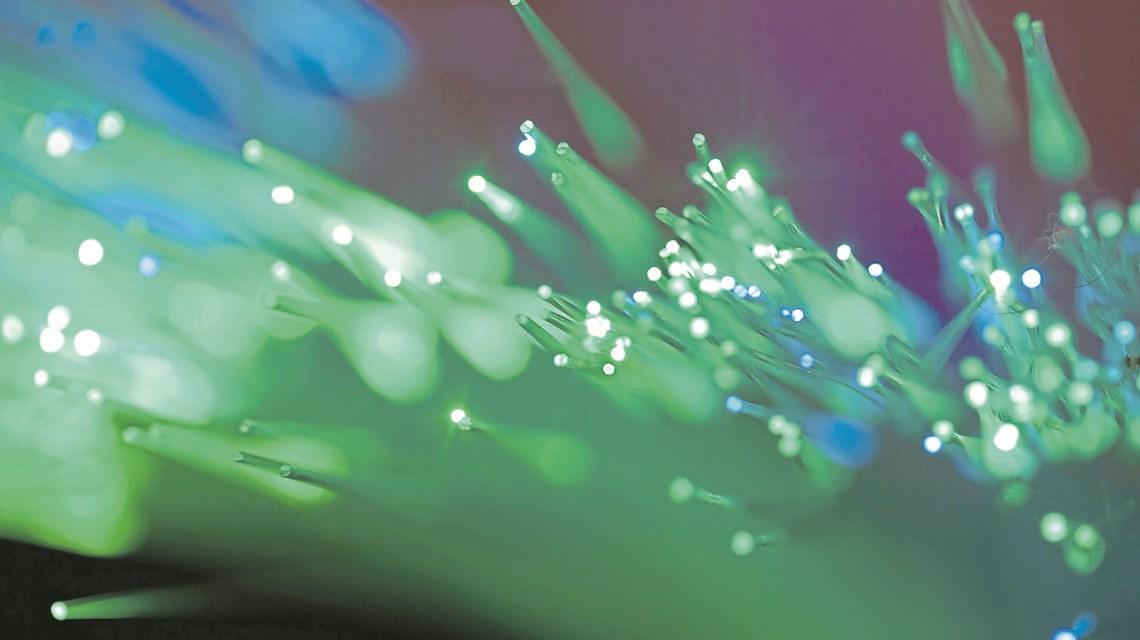
Continued on page 21

19
Digital connectivity
Scottish Piper Bear



The attention to detail, and the unique expressive eyes, ensure you simply want to pick this up and hug it https://amzn.to/3ZiFiyb
Manufactured from luxury acrylic fabrics.
The toy is filled with rPet recycled polyester made from plastic waste. Hand washable

Continued from page 19
The project presents unique communications challenges, mainly due to the rugged terrain, and dispersed population in the Scottish Highlands, and Islands.


In addition to the existing fibre optic network, a massive 1200km of new fibre infrastructure, including 400km of subsea cabling is underway
We know how important Wi-Fi is to our visitors and residents and take these needs seriously. That is why Scotland’s capital city, Edinburgh, is the UK’s largest Gigabit City.

Edinburgh’s ultra-fast fibre optic infrastructure crisscrosses the entire city and, for visitors and residents alike, this has meant the introduction of free public Wi-Fi across the city centre, and in more than 70 public buildings.

Read more https:// cityfibre.com/
SCOTLAND HAS FIVE MAIN INTERNATIONAL AIRPORTS. Glasgow, Edinburgh, Aberdeen, Glasgow Prestwick, and Inverness, which serve 150 international destinations.
21
homes
Photo by Jeremy Bishop: https://www.pexels.com
Scottish Travel Society merchandise


Scottish Travel Society merchandise is a fantastic way to show you are part of the STS Clan.
From simple Stickers, Trendy Tees, Baseball caps, Coffee mugs, and simple Pin badges, to practical items perfect for travelling like Totes, Back packs, Sports bags, Water bottles, Travel mugs, and waterproof Travel Pouches, not forgetting our Notebooks, and Journals.
Sporting the STS logo is an amazing way to meet other Clan members while visiting Scotland… or travelling anywhere else in fact, even in your home town.
There really is something for everyone in our collection, and its all available in one place, Redbubble, just follow the link to see the whole range and choose the items you desire. Happy shopping.
Click

Shop Scottish Travel Society

22
below to browse the collection
Salann na Mara
As I write this, I have recently returned home from a trip to Scotland, during which I visited the Isle of Skye. It is somewhere my wife wanted to visit for some time and, to be honest, it took very little persuasion to have me tag along. Like many of our travels, we had only an outline plan, nothing was cast in stone.
This trip simply meant pointing the car in a North-West-ish direction and driving. Stopping where and when our little hearts desired, or when something caught our eye; which is frequently, hence our journeys are never fast ones.
Our visit to the Isle of Skye was part of a larger, longer trip which I shall write about in greater detail in the future. It will most likely be in several instalments because there is much I need to tell you.
But for now, I must let you into a little secret. A little secret which should not really be a secret, because it is something you can share in and enjoy.
But first…
Where would any story about Scotland be without a little myth and legend?
In the Norse sagas, Skye is called Skíð and Skaldic in the Nordic poem Heimskringla (c.1230)

"In Lewis Isle with fearful blaze
The house-destroying fire plays; To hills and rocks the people fly, Fearing all shelter but the sky. In Uist the king deep crimson made The lightning of his glancing blade; The peasant lost his land and life

23
Who dared to bide the Norseman's strife?
The hunger battle-birds were filled In Skye with blood of foemen killed, And wolves on Tyree's lonely shore Dyed red their hairy jaws in gore. The men of Mull were tired of flight; The Scottish foemen would not fight, And many an island-girl's wail Was heard as through the isles we strife sail."
The island was also referred to by the Norse as Skuy (Misty Isle), Skýey or Skuyö (Isle of Cloud). Eilean a' Cheò, which means island of the mist, is a poetic Gaelic name for the island.
To be truthful, it is a fitting name. The mists, either mountain fogs, or rolling sea mists, can appear at anytime, anywhere on the Island, as can the rains. In fact, you can experience all the seasons in one day, even during a single morning, on this amazing island.
But that is enough of that, let's get back to the present and that little secret…
A short drive from Portree there is the Old Manse, and besides the main house, a small, unimposing stone outbuilding.
It is within this building which lays 'The Isle of Skye Sea Salt company', a very long name for a rather small, artisan business.
The Isle Skye Sea Salt company is Chris Watts and Meena Watts Island business. They take the clear waters of Loch Snizort, let the sun and wind naturally evaporate the sea water, leaving behind pure sea salt crystals which are high in essential minerals.
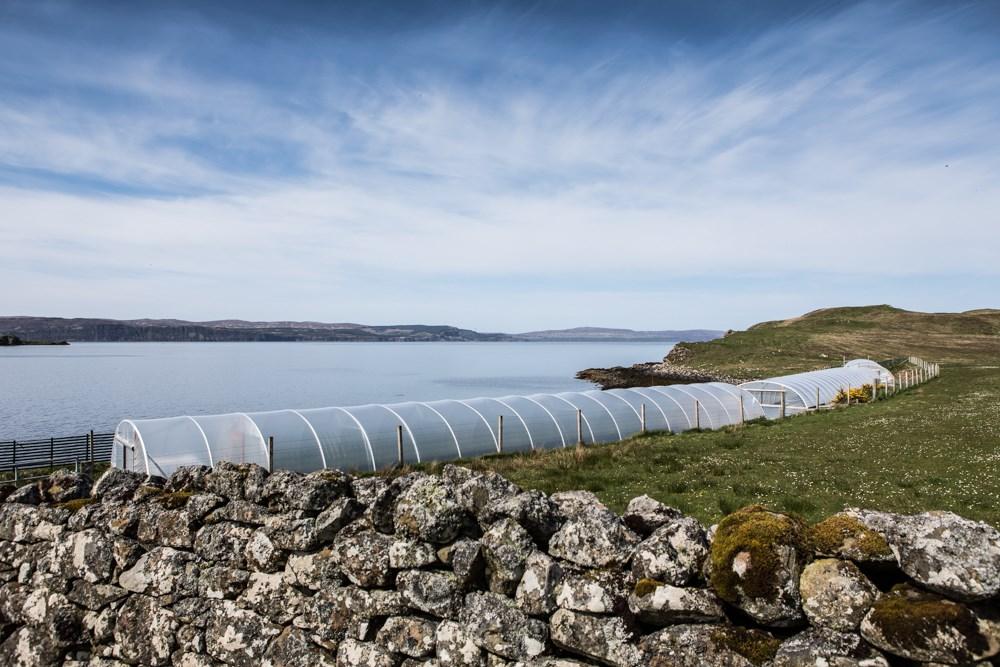

24
Chris and Meena are the first people to produce salt on the Isle of Skye since the early 1700s, and what a wonderful product they have.
The salt tastes like no other, it has an initial sweetness, followed by a deep, flavoursome, and intense saltiness, (thankfully!) Do not simply take my word for the quality this salt.
It has collected several accolades over the years, such as, Great Taste Award 2022, Scottish Retail Food & Drink Awards Silver 2022, Scottish Retail Food & Drink Awards Gold 2021, Best Product Award Scotland's Speciality Food Show Gold 2018, Great Taste Award 2018, Slow Food Arc of Taste 2015, Scotland Food & Drink Excellence Award 2015, Great Taste Award 2014, Highlands & Islands Food & Drinks Environment Award 2014.
Whether you are a professional chef, restaurateur, or a proud home cook, you really do need at least one tub of Isle of Skye Sea Salt in your larder. It lends a special, je ne sais quoi when incorporated into creative dishes.
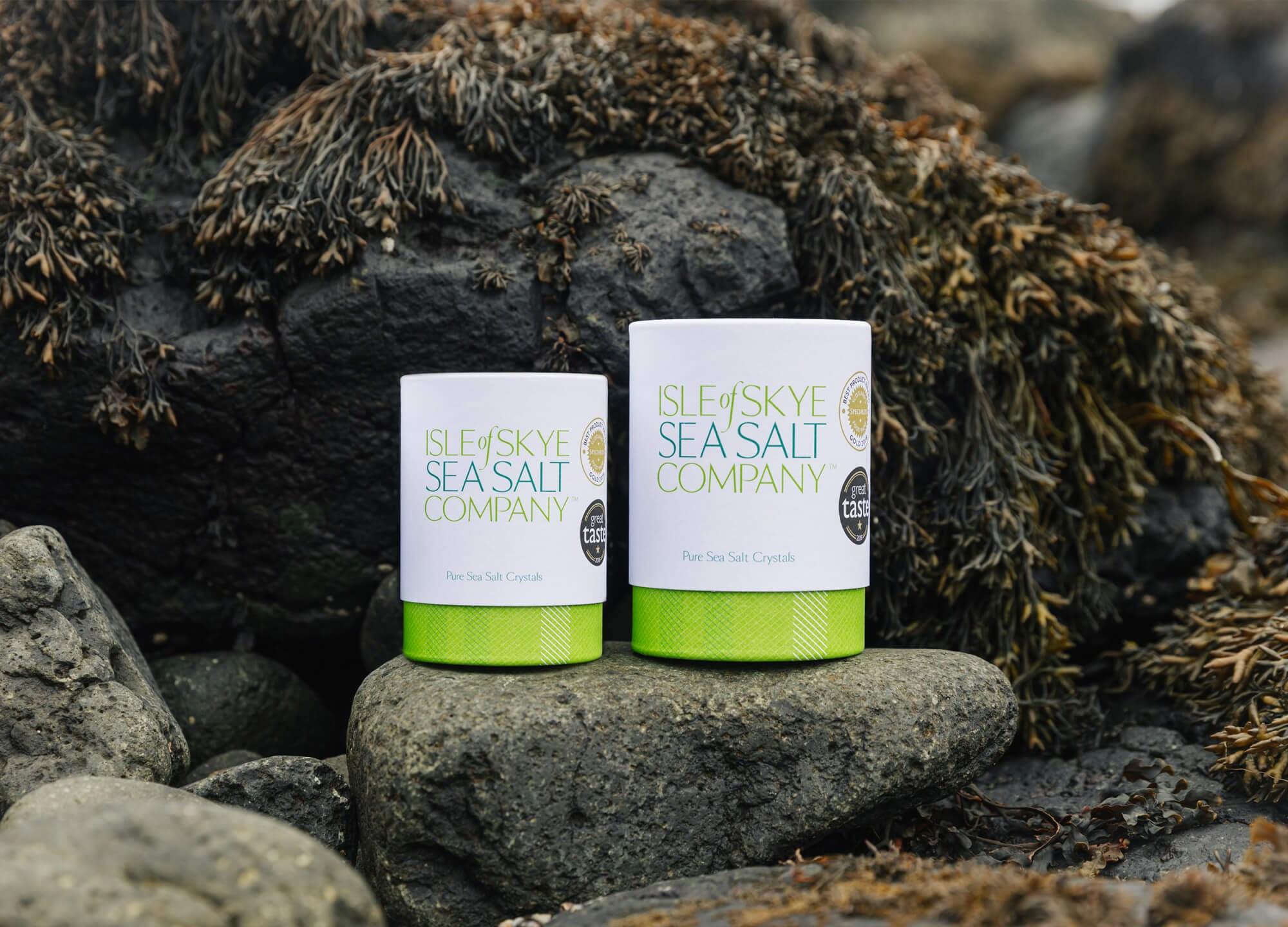
You can also use it simply; I love it sprinkled on tomatoes, over a fillet of fish, or even on home-fried chips (French fries to our American cousins) with a little-pickled onion vinegar (but that one might just be me!)
Continued on page 27
25
SPEYSIDE WHISKY TOUR

This Exclusive STS Private Tour visits Speyside and takes you to The Glenfiddich Distillery and The Speyside Cooperage. It is an excellent whisky tour and represents fantastic value, as included in the price is the Distillery Tour with 4 fantastic drams, a 12 year old, 15 year old, 18 year old, and the 21year old Gran Reserva.
8.45am, leave Inverness and proceed South towards Grantown on Spey, where we stop briefly at the old bridge over the river Spey for a photo opportunity, you may even be lucky and see some salmon leaping out of the water.
We continue along the road by the River as it winds its way Northwards towards the sea. We pass by Ballindalloch and on through Aberlour as we make our way to Dufftown, and Glenfiddich Distillery.
11:00am, Tour of Glenfiddich Distillery. Enjoy a guided tour of the Distillery followed by a tasting of 4 Delicious Drams. Glenfiddich is one of the few Single Malt Distilleries to remain entirely family owned.


The Tour takes arbout one and a half hours; the cost of £20 per person is exceptional value as your four Drams are included.


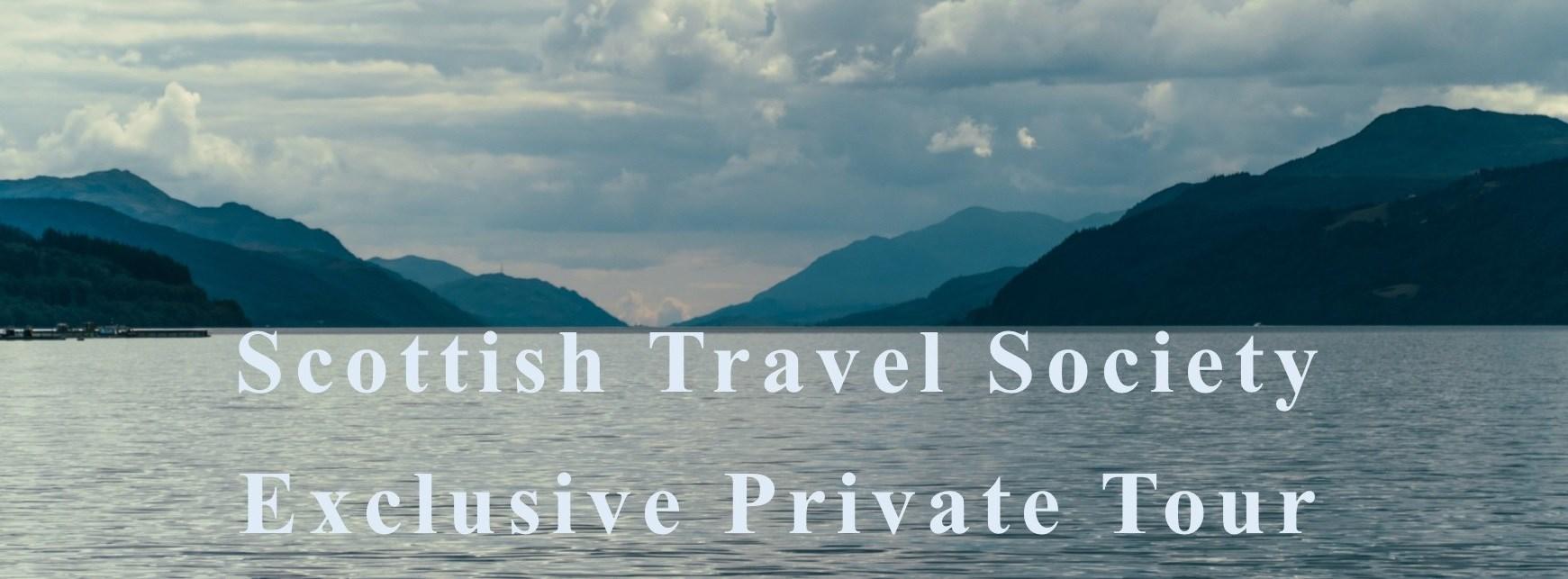
1:15pm, following your tour of Glenfiddich, we go to The Mash Tun pub in Aberlour for Lunch. The Mash Tun stocks an extensive range of Single Malt Whiskys and the Food is delicious, please look at their website, www.mashtun-aberlour.com

3:00pm, after lunch we proceed to Craigellachie, and visit the Speyside Cooperage, taking a tour to discover the ancient art of Coopering, and a journey through the life of the whisky cask. This tour takes approximately 45 minutes, and costs £5 per person. Arriving in Inverness, arriving at 5:30pm.
For full details click

26
Continued
By the way, neither Chris nor Meena know I am writing about them, this is not a sponsored post, or paidfor-advertising. I am writing this because I think the Isle of Skye Salt is the finest, most natural and pure salt in the world, and it would be wrong of me not to share this little secret with you. (Although it is no longer a secret, I guess.)
http://www.isleofskyeseasalt.co.uk
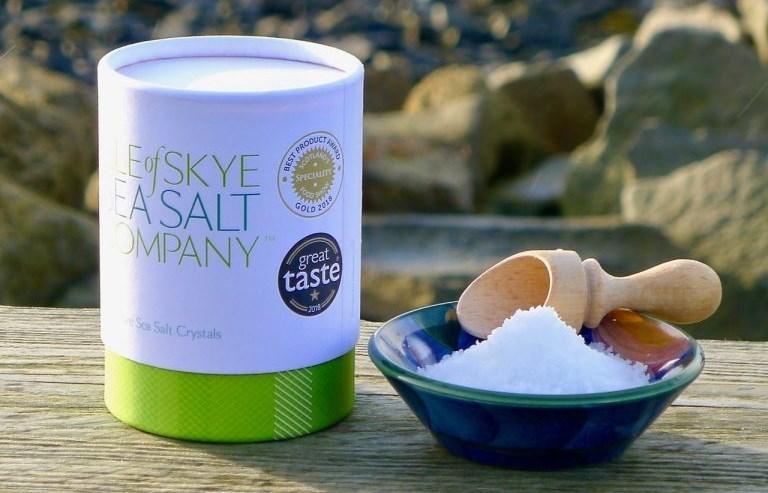


Or as they say on the Island…
Se salann càileachd a th’air a dheànadh san Eilean Sgitheanach a th’ann an Salann na Mara (Salt of the Sea) agus tha e a’ cuir gu mòr ri blas bìdhe.
Tha Companaidh Shalann an Eilein Sgitheanaich air a’ chiad luchd-deànaidh shalann san Eilein ann an 300 bliadhna. Tha sinn ag gabhail sàil Loch Shnìosoirt, soilleir mar an criostal agus a tha beairteach ann am mèinnearaichean, agus lè a bhi a’ cleachdadh, anns nan taighean-salann speisealta againn fhèin, proces giollachd a tha sònraichte a-thaobh na hàrainneachd, nach eil a’ cosg ach glè bheag neart agus nach eil caithteach, tha sinn ga thionndadh gu salann mara a tha fìor-ghlan agus nàdarra
27
from page 25
Scotland has a well-developed public transport system that covers the length and breadth of the country. It is estimated that a massive ninety five percent of the total population of Scotland live within a five-minute walk of a bus stop, or train station. So, it is relatively easy for people to travel on public transport in an easy and affordable way.
Scotland has an excellent rail network that serves cross-country links throughout Scotland, as well as regular connections to the rest of the UK.

In addition, we have a fleet of ferries, boats, and internal air flights, that can convey you to the most remote of Scottish islands.
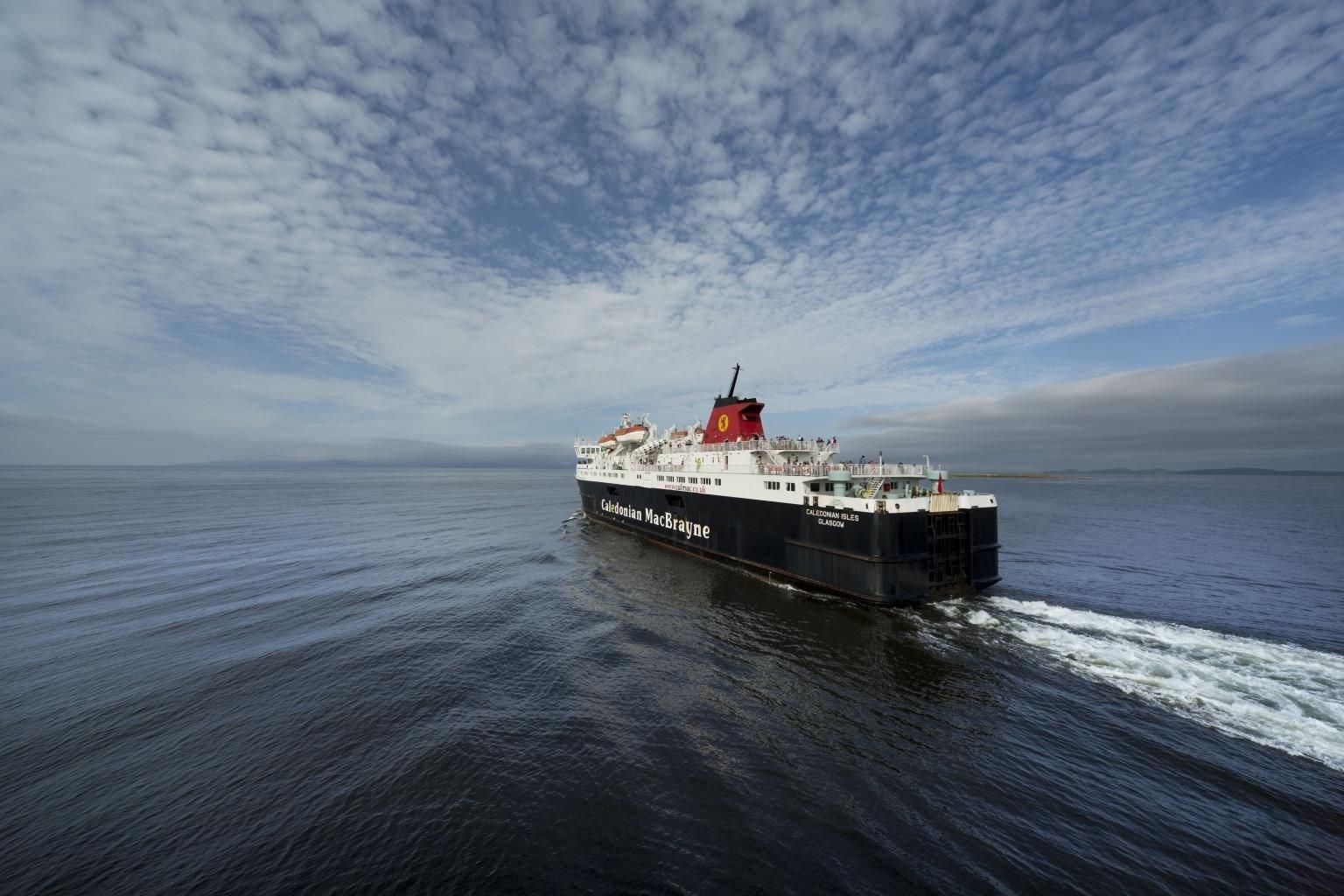
With these options, there is no excuse not to get out and explore the country.
Many buses and trains are equipped with free Wi-Fi, making your journey more enjoyable. So, whether you need to catch up on emails, plan the next stage of your journey, or just update your social media, you can do it while travelling in comfort.
Find out more at Transport Scotland, https://www.transport.gov.scot/public-transport/
Read more about travelling Scotland by train, in our article on page 39
Read more about driving in Scotland, on page 49

28
PUBLIC TRANSPORT
What ’ s in your Sporran?
An essential piece of Highland dress to accompany a Scotsman’s kilt is the ornately decorated pouch that hangs down the front, commonly referred to as the sporran. But where did the sporran originate and what is its purpose?

As early as the twelfth century Highland warriors were described as “bare-legged, with shaggy cloaks and a scrip [small bag] …” Such dress was, at that time, confined to the Highlands, as Scottish Lowlanders considered such apparel as barbarous, referring with contempt to their Highland kinsmen as “redshanks”!
Kilts of that time were basic garments that required no tailoring and comprised a single piece of tartan cloth some two yards in width by four or six yards in length. This was commonly referred to as the Breacan, the Feileadh Bhreacain, and the Feileadh

Mor, or as the English called it The Big Kilt. It fell to the knees and was secured over the left shoulder with a brooch or pin, and a tight belt gathered around the waist.

Such dress is ideally suited to the climate and terrain of the Highlands. It allowes freedom of movement, the tightly woven woollen cloth was warm and waterproof.
Unwrapped it could provide a voluminous cloak against the weather, or a comfortable overnight blanket, it dried quickly and with much less discomfort than trousers.
29
ONG WINTER NIGHTS
CALL FOR SHORT GLASSES. THAT’S OUR VIEW.
WHAT’S YOURS?
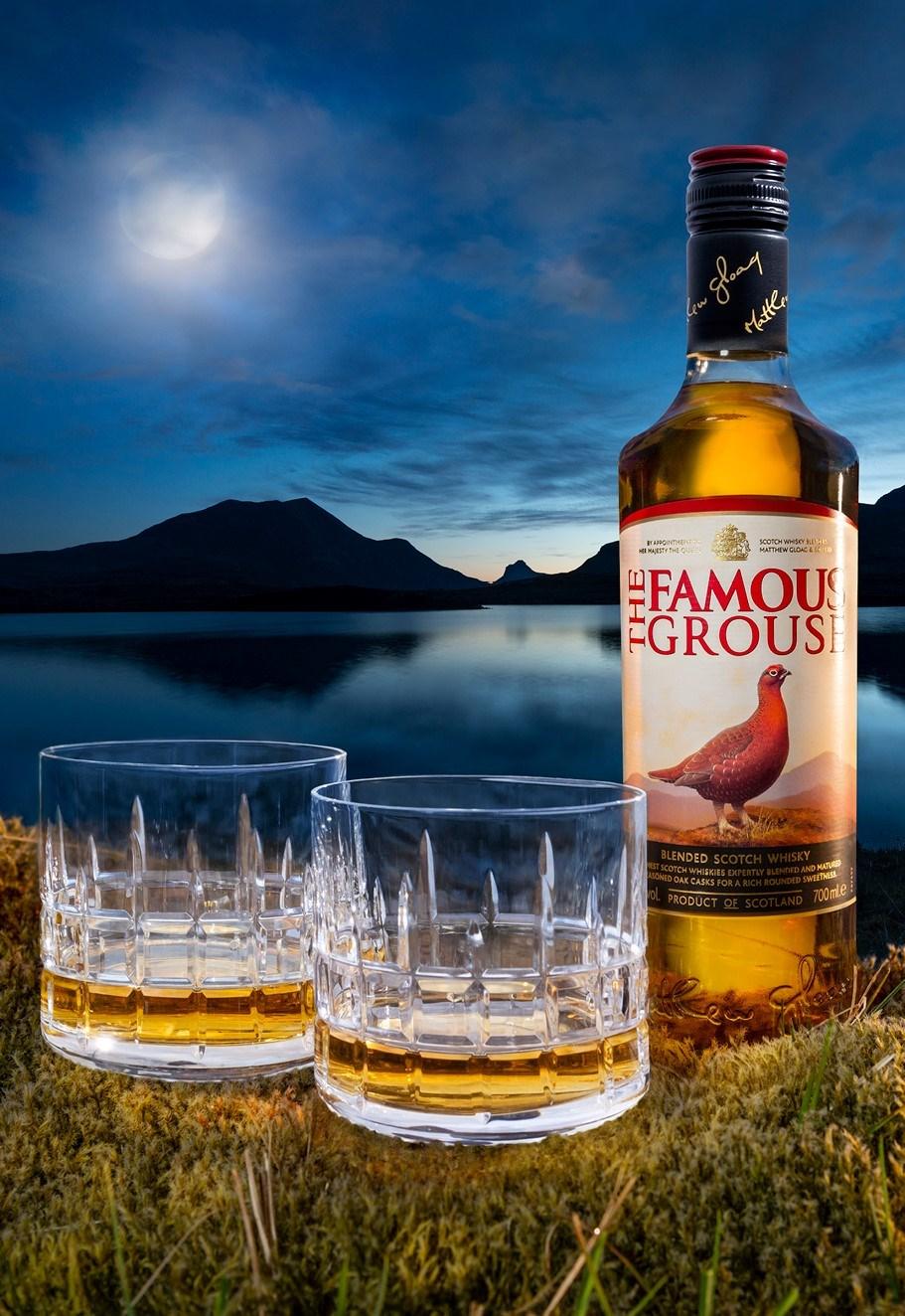
L
But unlike trousers, the kilt could not provide pockets, so the sporran was born out of necessity. A survival of the medieval purse, the sporran is the Highlander’s pocket..

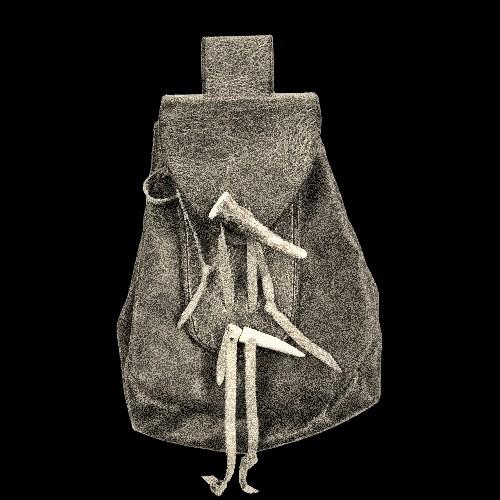
Original sporrans, dating from the fourteenth century and onwards, can be viewed at many Scottish museums. The history and evolution of the sporran can be traced through early British military paintings and portraits of Highland soldiers; these later sporrans start to show more elaborate decoration.
From the late seventeenth century and early eighteenth century, sporrans were generally fitted with metal clasps, usually made from brass, or for clan chiefs, occasionally silver. The elaborate metal workings of many of these clasps are indeed miniature works of art.
The goat-haired, sporran molach or hairy sporran, was introduced by the military in the eighteenth century. These sporrans often had flap-tops and large tassels, they featured a variety of furs and hair, such as fox and horse, or occasionally sealskin, all set off with a badger’s head.
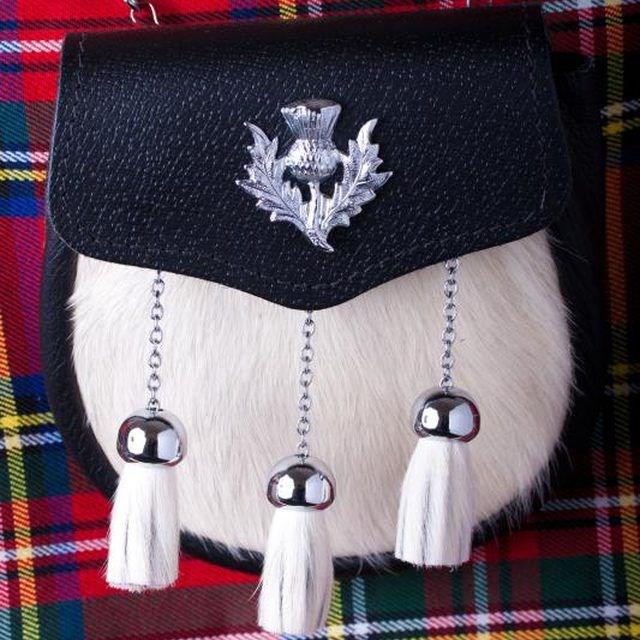
But what does a Scotsman keep in his sporran?
Well, one sporran on display at the National Museum in Edinburgh features a clasp of brass and steel, with four concealed pistols inside, the contraption being designed to be discharged should anybody attempt to open the locked purse, thus either killing, or maiming the thief.
The modern sporran, or sporan, has evolved a long way from the doeskin bag containing ammunition, or daily rations. Many feature stainless steel or even plastic. Despite modern enhancements, sporrans retain their basic design principles and carry everything from car keys to mobile phones.

Perhaps

31
the sporran is the original ‘Man Bag’?
CLAN STS IS OVER FORTY ONE THOUSAND STRONG AND GROWING
Take part in discussions, offer advice and suggestions. Tell us about your time in Scotland, and show us your photographs.
Get help with planning your trip, be it for a grand tour of the country, a city break, or a highland road trip.
Our members are kind, respectful and extremely helpful on all things Scotland and Scottish
The Scottish Travel Society Facebook group is highly rated by Meta for being well administered.
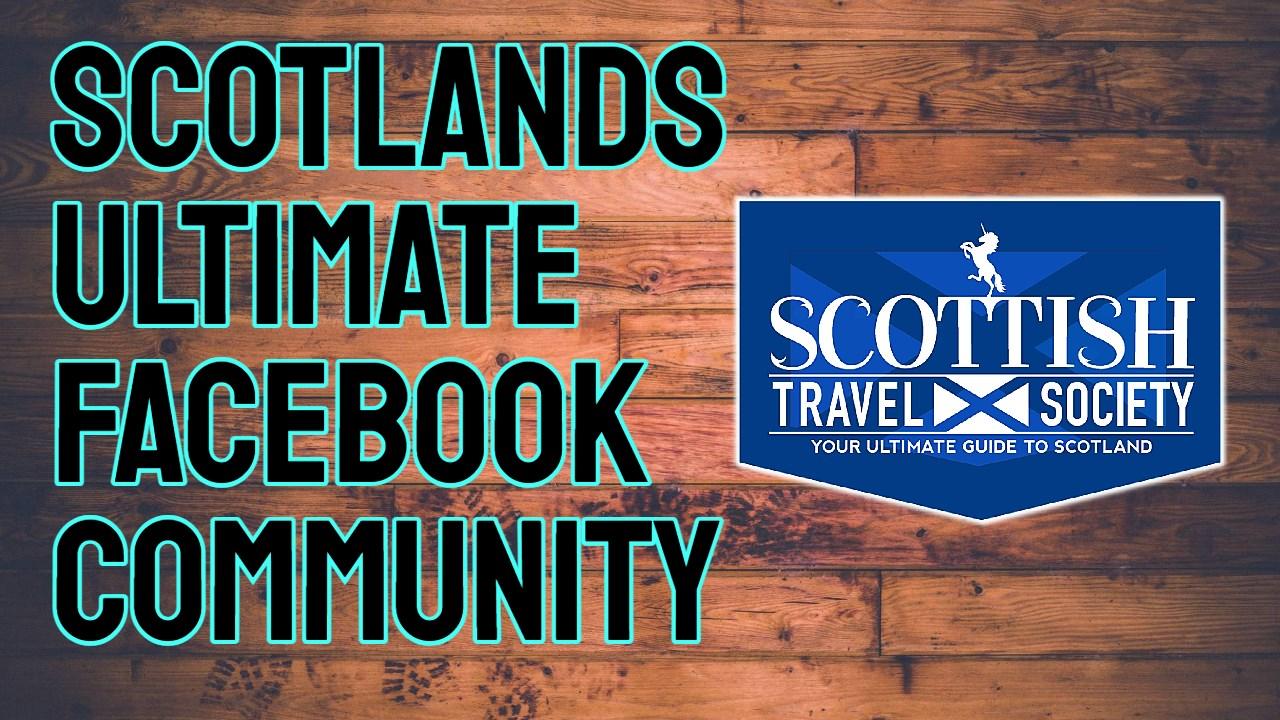
We are free from spam, trolls, and other undesirable influences, making it a safe and enjoyable group.
Follow this link and answer the membership request questions. Seeyouthere.
https://www.facebook.com/groups/
32
If you love Scotland, join us on Facebook
ScottishTravel/
Scotland A Weather guide

Scotland’s reputation when it comes to the weather is well-known, if slightly unfair.

Come rain or shine, your spirits will never be dampened by the weather in Scotland. The weather in Scotland tends to be quite moderate, if changeable, but is rarely extreme. You might experience ‘four seasons in one day’ but travel twenty, to thirty minutes in any direction and the weather is probably totally different.
There is no bad time of the year to visit Scotland, and there is always plenty to see and do, regardless of the elements.
As Billy Connolly said,
“There is no such thing as bad weather, only the wrong clothes.”

33
SPRING
MAR/APR/MAY
Spring is a truly beautiful time to visit Scotland, flowers begin to bloom, and the incredible cherry blossom appears in a burst of colour.
A milder climate also sees much of our amazing wildlife begin to pop their heads out for the first time and greet eager ramblers.
Spring is the undoubtedly the perfect time to get your walking boots on and explore the Scottish countryside. Even if you do get hit by the occasional April shower, it will help to blow away those winter cobwebs and give you a truly invigorating experience you will never forget.
Average temperature high/low
12°c/4°c (54°f/40°f)
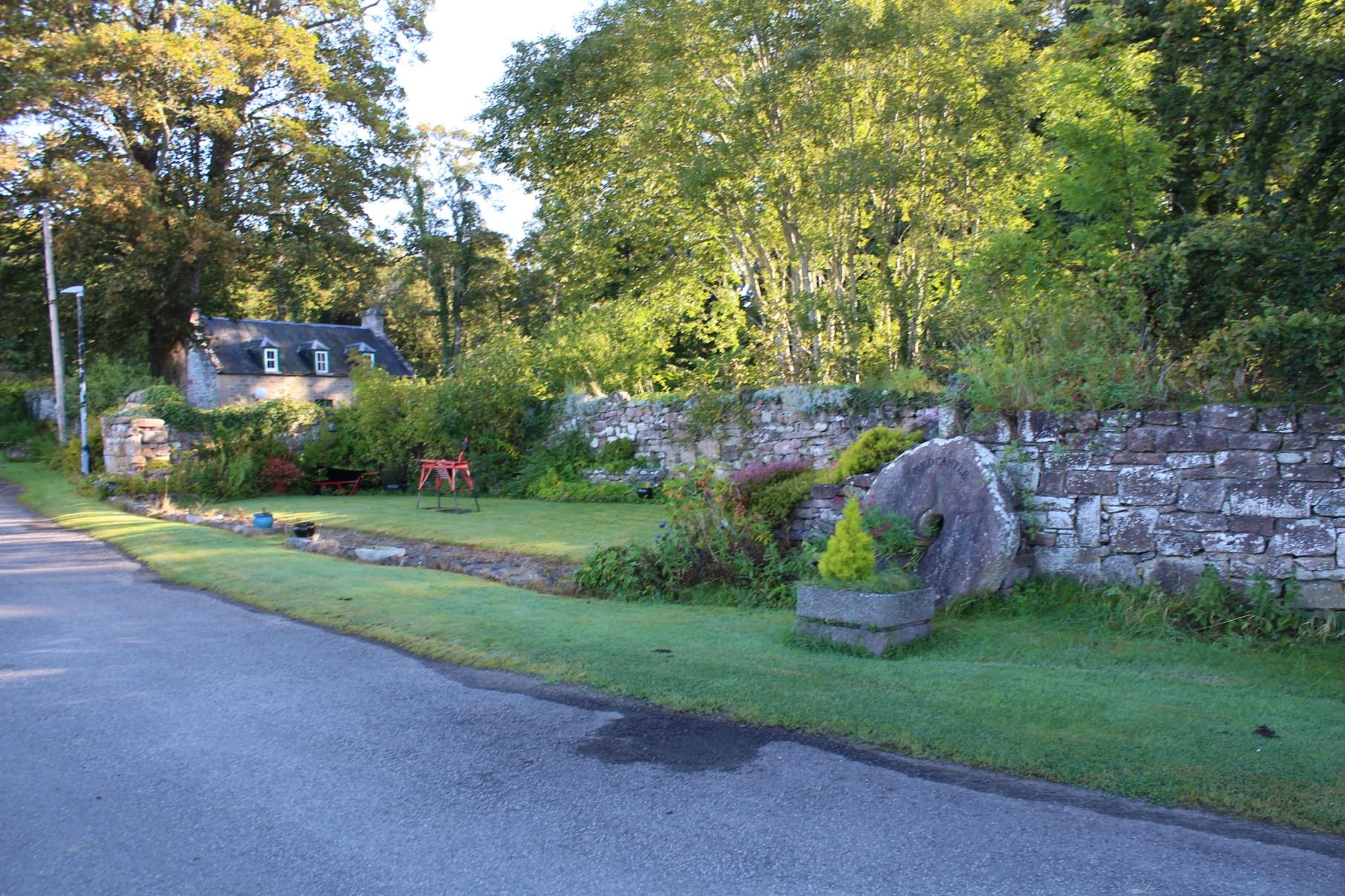

Average hours of daylight
13 hours
Average rainfall
48mm - 1.88 inches
One word forecast...
Mochie – warm, moist weather. “It’s a wee bit mochie ootside”
34
JUN/JUL/AUG
Summer in Scotland is festival season; a time when you can not only enjoy Scotland’s best weather, but also the very best in the arts and entertainment.
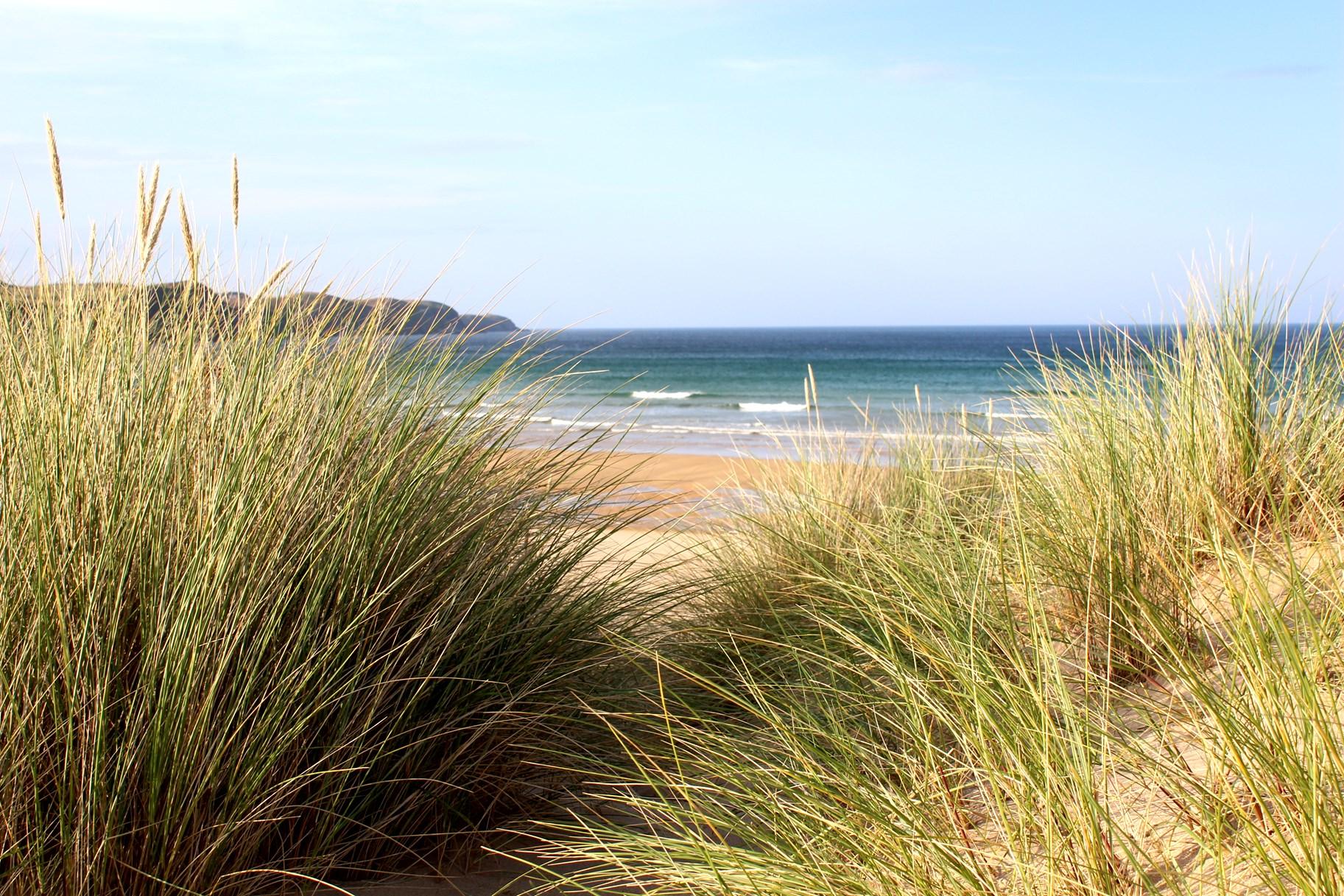
With highlights including the Edinburgh Military tattoo, the Edinburgh Festival Fringe, the largest arts festival in the world, there is no end to the amazing things to see and do.
While it might be our wettest season, it is also the warmest and our northerly latitude also means we benefit from incredible long summer days and beautiful extended twilight.
All this means there is more time for you to pack more experiences into a summer trip and create a lifetime of memories.
Average temperature high/low
18°c/11°c (64°f/52°f)
Average hours of daylight

17 hours
Average rainfall
72mm - 2.83 inches
One word forecast...
Stoater – fantastic. “It’s a stoater of a day th’day.”
35
SUMMER
AUTUMN
SEP/OCT/NOV
During the autumn season, Scotland goes through an incredible transformation as the leaves begin to change colour. It is the perfect opportunity for some jaw-dropping photographs as the foliage turns from green to the most vibrant reds, yellows, and oranges.
The early part of autumn is also usually quite mild and can provide some wonderful days to ramble around Scotland’s many city and country parks.
It may get a little chilly later in the season, but we promise that you will be so caught up in the stunning scenery that you won’t even notice the temperature.
Average temperature high/low
13°c/7°c (55°f/45°f)

Average hours of daylight
11 hours
Average rainfall
52mm - 2.04 inches
One word forecast...
Oorlich – damp and chilly. “It’s gey oorlich oot there.”

36
Even during Scotland’s coldest season there are plenty of experiences to warm you up.

New Year’s Eve, known as Hogmanay in Scotland, is a truly unique occasion; even as the temperature drops to its lowest, everyone comes together to celebrate.
From Stonehaven’s swirling fireball parade to Edinburgh’s spectacular fireworks display over Edinburgh Castle, there is something to suit everyone.
Winter is also the perfect time to warm yourself with a dram of Scotland’s best loved export, whisky. There are literally hundreds of whisky distilleries spread across the country providing plenty opportunities to sample the local tipple.
Average temperature high/low
7°c/2°c (45°f/36°f)

Average hours of daylight
8 hours
Average rainfall
57mm - 2.24 inches
One word forecast...
Jeelit – freezing. “It’s fair jeelit outside.”
37
WINTER DEC/JAN/FEB

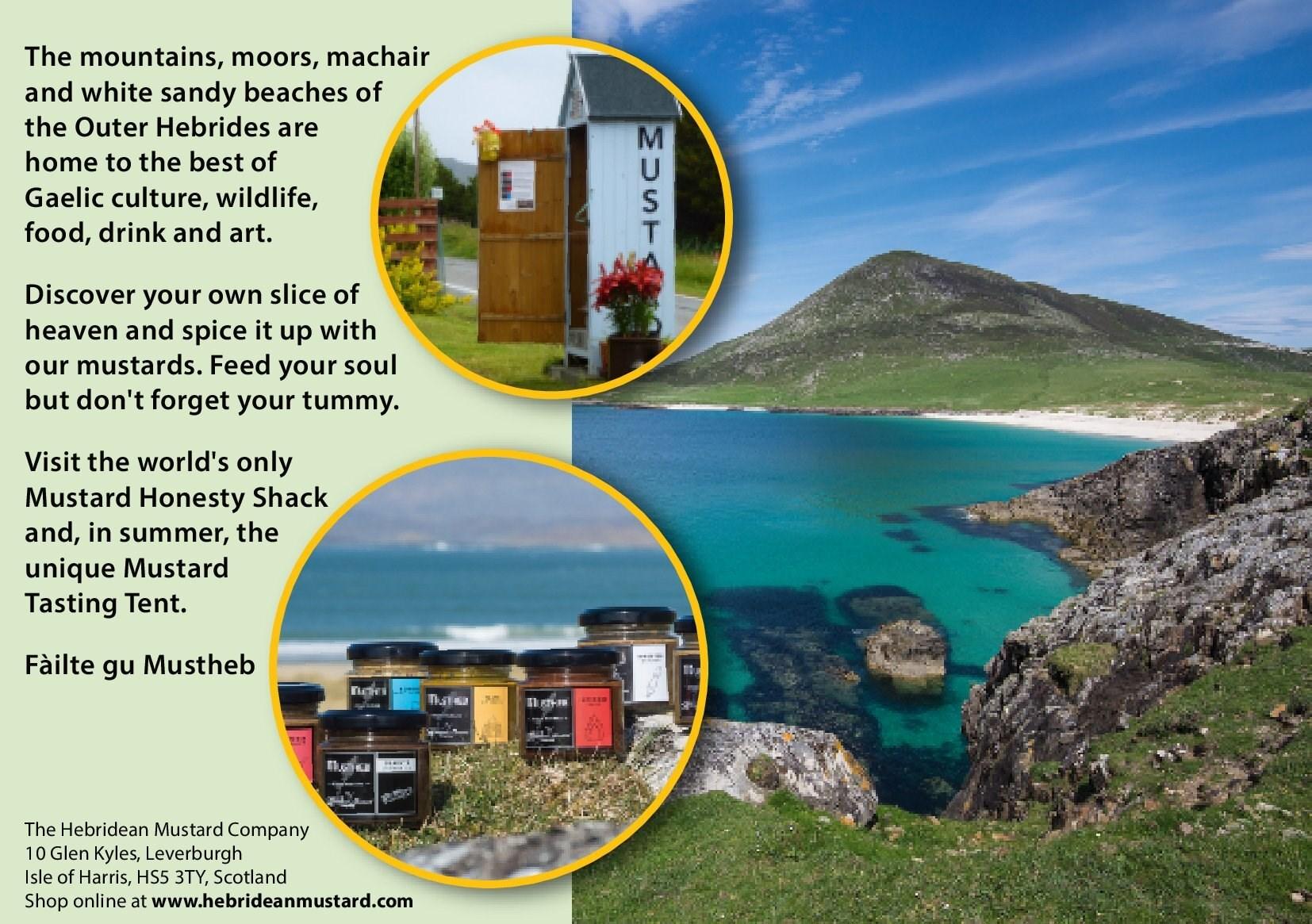
STSmarketing@mail.com
Traveling Scotland by Train
 An article by Dana
An article by Dana


Travelling through Scotland by Train is fun, affordable, and easy.
Watching the scenery from the comfort of your Scotrail coach is highly preferable to watching the road.
Once you arrive in town, bus services are available within a few yards of the Rail Station. Larger cities offer trams, Uber/Lyft/GETT, or taxi services. Although many people chose to walk.
Caveat
There are some places (islands) such as Skye, where rail service is not available. For those wanting to include an island visit in their itinerary, they will need to plan a secondary form of transportation.
We hired a private guide for Skye (http://www.thehebrideanexplorer.com) his knowledge of the area and the history as well as his ability to negotiate the single-track roads of Skye while I hung out the window and snapped pictures was lovely.
39
The Trains
Most Scotrail trains have Wi-Fi. This is great for those last-minute questions that always seem to pop up when you are enroute to a new town. Most trains have outlets for charging your phones or laptops, and many have USB ports. You can even download books and other entertainment from the Scotrail app, which is free, just create an account. You will need to sign in to Scotrail Wi-Fi every time if you do not download the app. It is amazingly easy and will ask you to agree not to do any major file sharing and bog down the Wi-Fi for everyone else.
If you are travelling any distance, such as Glasgow to Stirling or Edinburgh, your train will have a tea lady cart offering tea, coffee, and assorted snacks, nothing big but welcome if you are feeling peckish.
For those of you who want more most trains are BYOB. We enjoyed ales on several journeys. Please be responsible for your consumption, and disposal of your beverage containers. All Scotrail stations have recycling on the platforms. There are a few exceptions to the BYOB policy. They are well noted. You will NOT be caught off guard. The one T Train (as in t-total) that we encountered was a late-night rural train.
For those of you who want more to eat All trains have tables at most of the seats. Many people brought crisps or other snacks, and one Hen party passed around plates of sandwiches and sausages. Again, please be responsible for clearing up after yourself. Few trains had rubbish cans, but ALL stations have recycling and rubbish containers.
Restroom facilities are available on most trains. If you do not see one in your car, try the next car down.
Buying Your Tickets
There are several alternative ways to buy your tickets
1. You can purchase them at the station immediately before boarding the train from the customer service agents, or the automatic vending machines. This is more expensive than buying them in advance but only by a few pounds.
2. You can purchase them on the train. Board the train at the station, and when the conductor asks to see your ticket tell them you need to purchase the ticket. You will have to have cash for this option. It is the most expensive way to buy a ticket but again it is within a few pounds of the advance purchase price. If you are very free-spirited in your travel, or about to miss your train, this will save you lots of stress and pressure. We saw at least one person choose this option on every train we boarded in Scotland.
3. By your ticket in advance on www.thetrainline.com,
or www.buytickets.scotrail.co.uk.
We used both, and they were both easy to use. Either way, you pay by card and are sent a confirmation code. When you get to the station you print them out at the automatic ticket machine. You will need the card you paid for the tickets with, with you to print them.
Insert the card, it will be validated but you will not be charged again. Type in the confirmation code.
40
Tell it to print your tickets. We paid for multiple journeys ahead of time and printed everything we needed in a city when we arrived, (day trips, tickets to the next city.) This saved time later, and was a manageable number of tickets to keep up with.
which way (north, south, east, or west) you are travelling. Chose the appropriate platform.
Small rural stations
Smaller stations have minimal services. Larger stations (Inverness, Aberdeen) have coffee stands,

From Larger Stations
Arrive 15 minutes early for your train. this will give you time to look at the boards and determine which platform your train is leaving from. If you get there significantly early your train may not show on the boards. The customer service agents will be unable to direct you to the correct platform until the train appears on the boards.
How to read the boards
The Boards show the time of the train, the departing platform, the destination, and the stops it will make on the way. If you see four boards from 7 am – 7:30 am, and you showed up for a 7:45 train just wait, your train and platform will be displayed on the boards nearer the scheduled time.

From small Rural Stations, you will need to know
restaurants, and sometimes a grocery or convenience store. If you purchase food or beverages at the station, there may not be any recycling, or rubbish containers until you reach the train platform. We were endlessly entertained watching people look for the rubbish bin in the Edinburgh Waverley Station’s Pret a Manger.
Entering and exiting the turnstiles
If you are in a larger station you must go through the turnstile to get to the train. Feed your ticket into the slot on the front side of the turnstile. It will be returned on the top of the turnstile. Take it, but keep it handy as you will need to show it to the conductor aboard the train.
When you exit the station, you will again feed the ticket into the slot on the front side of the turnstile. It will not be returned if you have reached the end destination on your ticket.
41
More cool things about ScotRail
On most trains we were able to make seat reservations. Take your ticket to the Customer Service window at least 2 hours before the train, (or the day before, or earlier in the week when you arrive) and ask to make seat reservations.
You are often given the choice of front facing seat, and with or without a table. You will be given a second ticket showing your seat reservation. Keep your original ticket with it. You will need both to travel.
Reserved seats are marked with a white card at the shoulder. Look for your car and seat numbers. If you have any questions people are always willing to help, and Conductors will guide you to your seats. Reserved seats saved us from a long-standing train ride from Inverness to Glasgow. There are many times seats are plentiful and you will not need this service, but it is worth the three minutes it takes to make the reservations on a crowded train.
We did have one train they told us was a ‘local’, so no reserved seats were available on that train.
4. You might change your train. We had flexible tickets. Again, they cost a tiny bit more, but they allowed us to take any train for that route that day. (This was an option on trainline.com) This allowed us to sleep in when we were beat, and to take earlier
trains when our walk to the station took less time than planned.
5. You can stop and get off, and then continue your journey later. We never did this, but we were informed it is possible, particularly if you are disembarking at a station with left luggage services. The ScotRail website will tell you whether these services are available. We used them in Inverness; select a locker and store your bags, go to the machine, put the locker number in and follow directions. You can pay with cash or a card. You will be given a receipt. When you return, you scan the receipt and the locker pops open. There is someone to help if you need it.
Anytime Day tickets were our preferred method. They cost £1 more than the off-peak ticket. Off-peak tickets were the cheapest. After 9:15 am and on weekends trains are off-peak. There may be some restrictions in the evening. First-class tickets are also available on some trains. They cost about £1 more than the Anytime Day tickets. We never used this service, so I cannot advise you about it.
Always read carefully and be sure of which tickets you are purchasing.
Enjoy the view, Love Scotland. Dana.
Scottish Thistle
Whisky Tumbler

11oz whisky glass complete with cast pewter Scottish Thistle emblem
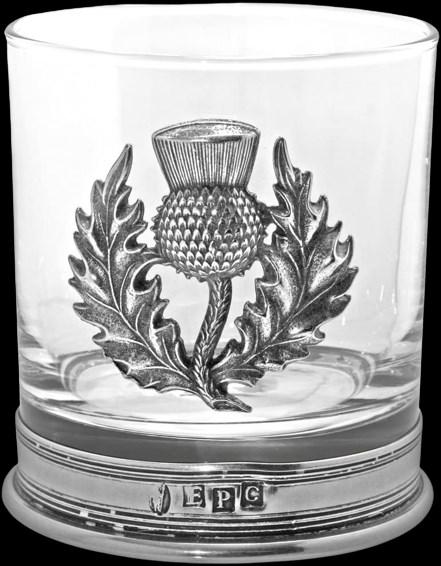
Supplied in a cream and black presentation box complete with velvet bag
This item can be personalised with an engraved message
https://amzn.to/3VQsw71
42
NEWBeavers at Loch Lomond Nature Reserve
NatureScot has approved RSPB Scotland to release a family of beavers at Aber Burn in the Loch Lomond National Nature Reserve (NNR). The decision marks the third new site approved for the release of beavers in Scotland, following the initial beaver reintroduction trial at Knapdale, in Argyll, and the release at Argaty, near Doune, in 2021. The site was found to be highly suitable for beavers, with low conflict potential. An environmental report highlights that beavers have been present in the catchment since at least 2019, and are likely to further colonise it naturally.

NatureScot believes speeding up the natural colonisation process in this location by releasing beavers will help to improve population numbers and genetic diversity, delivering a wide range of benefits for nature in the Loch Lomond and The Trossachs National Park. The reintroduction area at the Aber Burn is at the southeast end of Loch Lomond near Gartocharn. The beavers will be trapped and taken under licence from areas where they may be having a negative impact on Prime Agricultural Land, and where mitigation measures have not been successful or are not possible.
Donald Fraser, NatureScot Head of Wildlife Management, said, “Beavers are ecosystem engineers, creating habitats such as ponds and wetlands where other species thrive, as well as moderating water flows and improving water quality. In doing so, they play an important role in helping to restore biodiversity and respond to the climate emergency in Scotland. This decision will allow beavers to be trapped and removed from highly productive agricultural land, and introduced to an ecologically suitable site, within their current natural colonisation range where they are expected to bring a range of benefits. We know beavers can occasionally cause issues, and we recognise the concerns raised by some through the engagement process. We’re committed to working with RSPB Scotland, local communities, and stakeholders to develop an effective monitoring and management plan that seeks to minimise any negative beaver impacts and maximise the benefits and opportunities of beaver restoration.”
The beavers will be trapped in line with best practice, and undergo appropriate health screening, before being released in early 2023.

43
Tamara from Australia writes
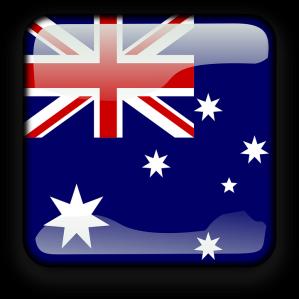
“Ruby, can you precisely tell me what the weather is going to be March 7th to the 24th, in 2025, when I am planning to travel?”
Tamara… I am a columnist, not a fortune teller, and believe me, I if could predict weather that far ahead I would be am extremely wealthy person.
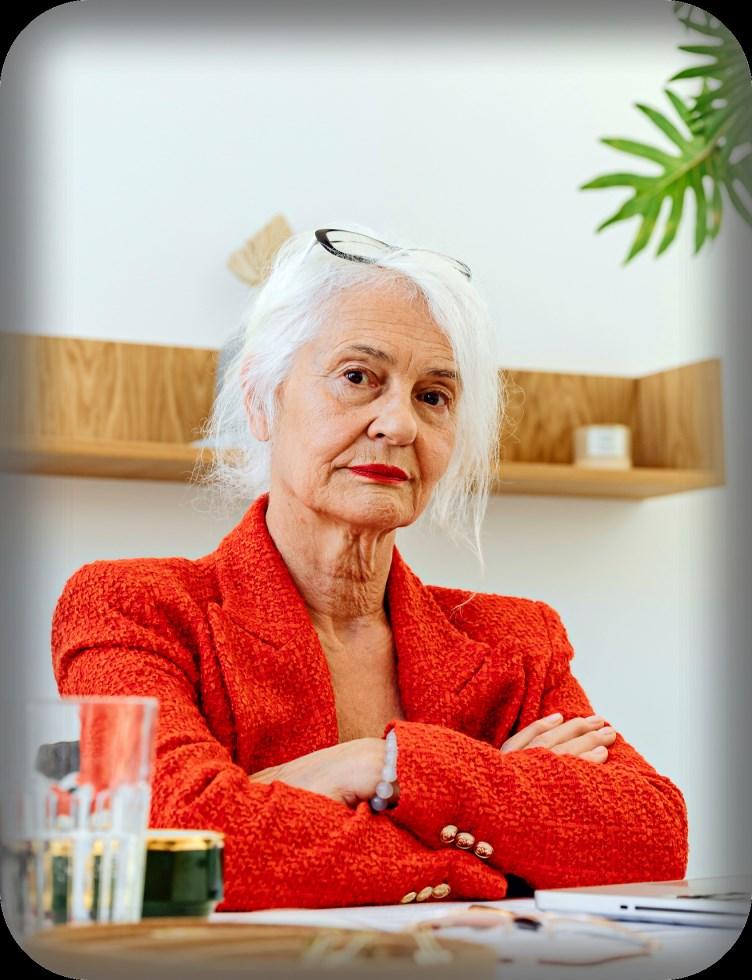
There is no crystal ball here.
The weather in Scotland is moody and changeable, kind of like how Cher changes outfits 500 times during a concert.
Scotland does the same with the weather. You really CAN have every season show up in a single day; rain, sleet, snow, sunshine, cool temps, and warm temps.
There is absolutely NO rhyme or reason to the weather in Scotland. Even the weather forecasters do not get it right that often.
You must be prepared for any possibility.
You can be basking in glorious sunshine one moment, to having a gale blow-up the next. You can take the initiative and do some research for generalities, but there is absolutely no way to tell you what the weather will be.
Can you tell me what your weather will be like on September 7th, 2025 at noon?

I think not.
The rule of thumb is layers, layers, layers.

44 W RITE TO Ask Ruby Kipper your questions email: travelscotlandmagazine@mail.com
Cash confused from Kansas, USA writes:
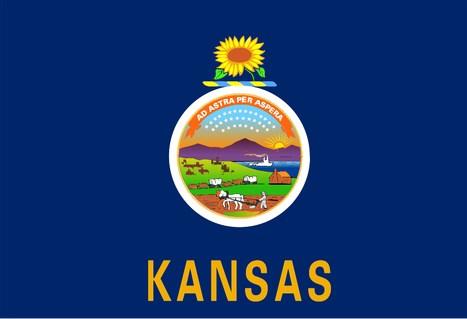
Dear Ruby, can I spend American dollars in Scotland?
Well, you certainly are rather confused there Dorothy let’s put it this way as a Scot, can I come to the USA and spend my £ (GBP) at a McDonald’s or any other store for that matter? I think the answer is NOOOOOOO.
You are not in Kansas anymore Dorothy, you are in the UK, and with that, you either need credit/debit cards or cold hard cash, which is abbreviated GPB or the Pound Sterling. Any note from Scotland, England, Ireland, and Wales is spendable in Scotland. If your preference is cash, you can make the exchange at virtually any bank for a nominal fee, just allow one to two weeks for the exchange.
You absolutely cannot spend anything other than the GBP in Scotland, so click your heels together three times and say, “There’s nothing like the Pound Sterling, there’s nothing like the pound Sterling, there’s nothing like the pound Sterling.”
RUBY KIPPER
answers the questions you have been agonizing over
Thomas from Canada writes: Dear Ruby, How much spending money do I need for two weeks of travel while I am in Scotland?

Hello Thomas from the great white north! I think it is time to shake some of that frost out of your brain. This question is unanswerable.
How many meals do you eat a day? Do you eat in at all, or is everything out? Do you snack in between meals, or enjoy a coffee every day? Are meals included in any part of your stay? Are you a fast-food fella, or a 5-star gourmet?
How are you getting around? Trains need tickets, as do busses, and cars require petrol. How many miles do you estimate you will drive if you are driving?
Are you buying gifts to take home? What is the budget for that? Do plan to drink in pubs in the evening?
Are you taking guided tours? Do you wish to see things that charge admission?
There are so many variables, even our smartest astrophysicists could never come up with a formula to calculate this.
You really must do your research and make an educated guess. Better to have too much money than not enough.
Suff happens.
45
The Brig o' Balgownie
The Brig o' Balgownie is a 13th-century bridge spanning the River Don in Old Aberdeen, Aberdeen, Scotland.
Construction of the bridge was begun in the late 13th century by Richard Cementarius, although its completion was not until 1320, at the time of the Scottish War of Independence.
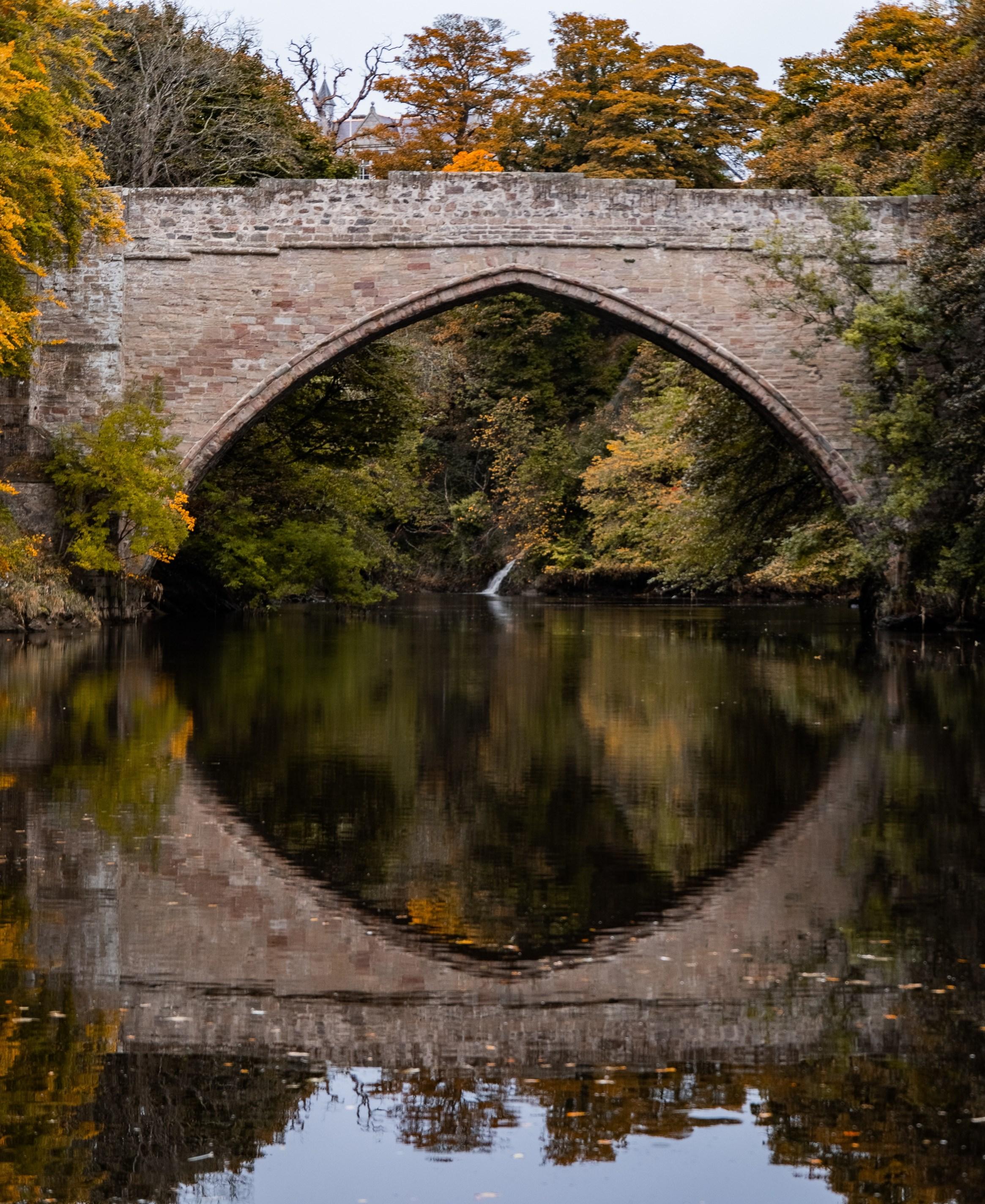

46
Photo by Kieren Ridley/pixels
Here are a few pieces of information you will want to know while you are visiting Scotland.
CURRENCY
Legal tender in Scotland is the pound sterling (£), often simply referred to as Great British Pound (GBP). The currency is used throughout the entire UK.

All major credit cards can be used across Scotland, with Visa and MasterCard being most widely accepted, e-payments, such as the Paypal app are becoming more widely accepted too.

BANKING
With more than 300 years of banking experience, your money is in safe hands in Scotland. With a large variety of banks offering different types of services, we have everything to meet your financial needs.
Scotland is one of the few countries in the world where you will not be charged for a bank account, as long as you stay in credit. Most banks in Scotland are open Monday to Friday from 9:30am to 5:00pm. In addition, many banks are also open on a Saturday morning.
You will find cash machines (ATM’s) in our larger towns and cities. Most rural areas will have at least one place where you can withdraw cash from an ATM, usually in the local store, or a filling station. Post offices may also have exchange services and/or an ATM.
Our cash machines will normally accept international bank cards and credit cards, as long as they have a four-digit PIN code.

EXCHANGING CURRENCY
Foreign currency is rarely accepted, but do not worry, it is easy to exchange most foreign currencies in Scotland. Banks, hotels, post offices, and Bureau de Change can be found at our international airports and in most of our city centres.
47 Money Matters
Have you seen the Scottish Pyramid?
Scotland is probably the least likely place you would expect to find this form of ancient architecture but there is a pyramid in the Cairngorms National Park.
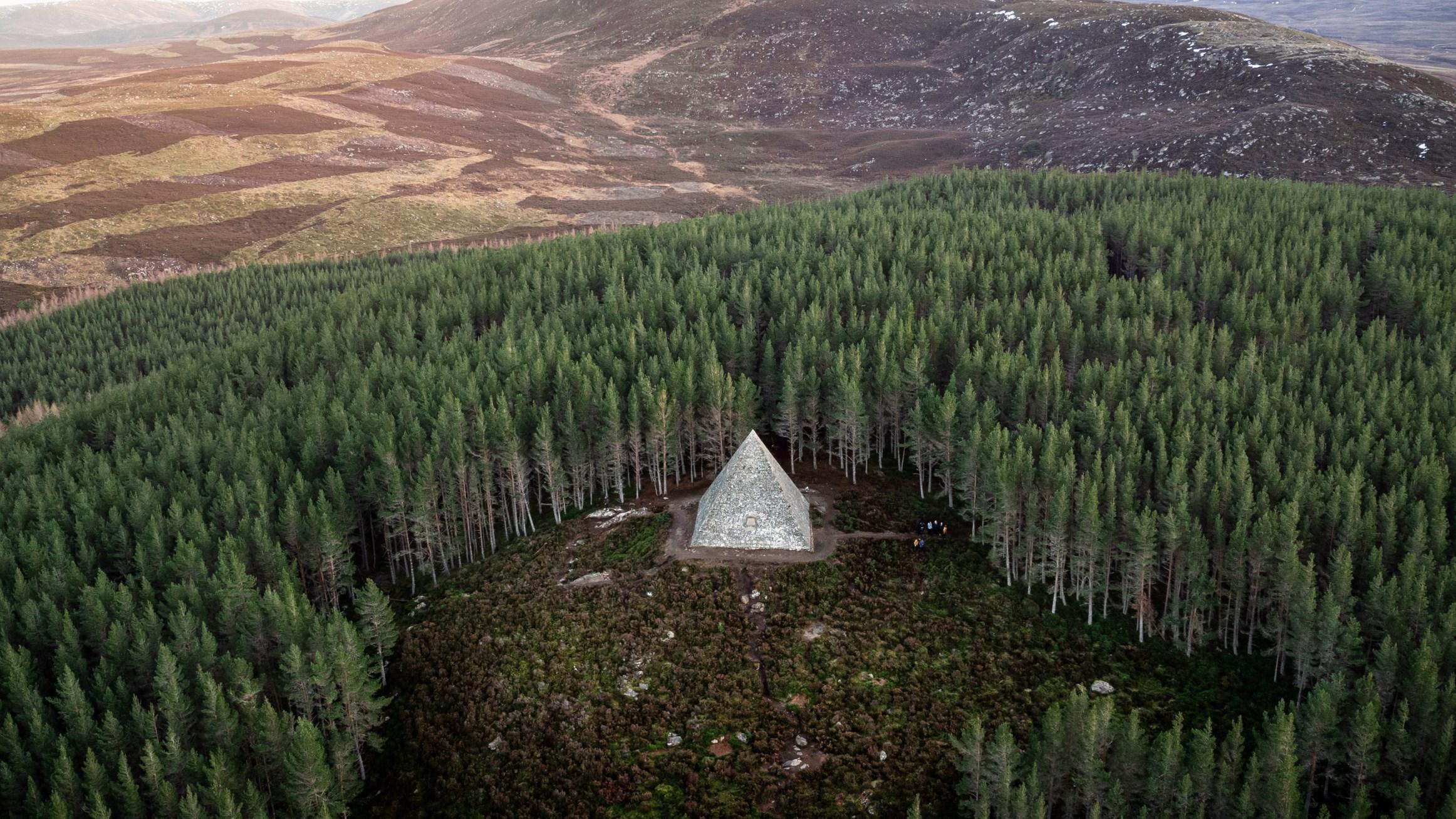
Amidst the Scottish woodlands, which is primarily known as a fascinating place strewn with medieval castles, is a piece of architecture with an interesting royal connection.
This (almost) secret Scottish pyramid is part of the eleven Scottish Cairns assembled to commemorate members of the British Royal Family. This one was constructed to symbolise Queen Victoria’s love for Prince Albert.
It is the largest of the eleven Cairns, and was constructed after Prince Albert’s death, as a tribute to his life, and love for the great outdoors, near the Balmoral Royal Estate in Aberdeenshire.
It looks magnificent, especially as it is surrounded by thick woodland forest. It is one of the most unusual, even surreal sights in Scotland.
There are various routes you can take to get there, although I would advise following the circuit through the woodlands, this will gradually, and quite gently, take you along the hiking trail where you will find smaller cairns dedicated to other members of the royal family, particularly Queen Victoria and Prince Albert’s children.
48
MY DAY IN THE JOB AS A TOUR GUIDE
By Lawrence Mclean, Highlander Private Tours
I am a Highlander; I am very passionate about Scotland, and the Highlands in particular, and I love meeting people, guiding them around, telling them about the History, the Geography, and all the stories about the places we visit.
For me, a typical tour day from Invergordon port would start around six am, when I get up, get ready and grab all the gear I need; the cold water from the fridge, the Tunnock’s caramel wafers and teacakes (I find most people love these Scottish delicacies as a snack) and crisps.
Once the coolbox is filled, I set off in the tour vehicle, it is a 2L Ford Galaxy, a top of the range Titanium model with leather seats.

My first stop is Morrisons Supermarket in Inverness, this where I clean the inside of the Galaxy insuring there is no mess left from a previous tour. I hoover and disinfect, making sure the inside of the car is spotless, and there is hand sanitiser for mu guests. Then its thorough wash for the outside of the vehicle.
By now the time is around 7.30 am, time to head North to Invergordon port to collect my guests for the tour.
As I get close to Invergordon, I can see the cruise liner is berthed at the port, so I park the car, grab my notice board, on which I write the name of my guests, and walk down to the port gate.

There are plenty of tour guides waiting at the gate for their guests. Some wear kilts and some not.
Most guides know one another and often we help each other out. On one occasion, a guide was booked for a party of three but six people turned up. His car could not accommodate six, so another guide, who was driving a minibus, swopped tours with him as his party was only a group of four, so everything was good for both groups of guests. Today I have a party of four, a family. They see their name on my board, and we introduce ourselves. I am taking them to Loch Ness, Culloden Battlefield, and Inverness.
One of the first thing I like to do is to make my guests feel at ease, so I reveal our itinerary for the day, also saying that nothing is set in stone, so should they wish to drop something and add a visit to somewhere else, then that is fine, time provided,

49
One of the first thing I like to do is to make my guests feel at ease, so I reveal our itinerary for the day, also saying that nothing is set in stone, so should they wish to drop something and add a visit to somewhere else, then that is fine, time provided, which is why it is so important to establish the time the need to return to the ship. I also say that if they wish to stop anywhere to take photographs, they should simply let me know.
We set off, heading along the Cromarty Firth, passing Dalmore Distillery on our way (my favourite dram). Whisky is a great conversational topic, as is anything Outlander, along with Golf, History, and Scottish Heritage.
I usually check in advance my passenger's surnames to see if they have a Scottish Heritage. If they do I inform them what area of Scotland their clan/family comes from.
Many clans have people of different surnames who lived in the clan lands, these people were called ‘septs of the clan’. They lived in the clan lands, fought with the clans, and were protected by the clans. For example, the surname Rankin is a sept of Clan Maclean.
As we head over the Cromarty Firth Bridge towards the Black Isle, one of the teenagers is becoming bored by the adults talking, so I give him the Wi-Fi password so he can do what such youngsters like doing best, tapping away on their mobile phone.
The first stop of the day is at Beauly Priory, the 13th -century Monastery that was destroyed by Oliver Cromwell's forces in the 1600s. The Priory is also an ancient burial ground of the chiefs of Clans Fraser and Mackenzie, unfortunately, the very old Elm tree

that once stood in these grounds succumbed to Dutch Elm disease and fell recently.
The lady of the family on tour is an avid Outlander fan. She is delighted when I inform her it was here that Claire met the seer. Just outside the priory, is Beaulys Mercat Cross, most towns in Scotland had a Mercat Cross, it is where people were punished for their wrongdoings.
One of the sights many people want to see are Highland Cows, a short way along the road from Beauly, we stop at Robertson's farm shop to see their two Highlanders, a Black Bull called Jamie Mackenzie Fraser (that’s right, that’s his name), and his sister Katie Morag, they are gorgeous beasties. Frequently, a very friendly cat also comes running out to greet you. Robertson’s farm also have some Alpacas, but you do not want go too close as they often will spit at you.
50
Our next stop is Wardlaw Mausoleum, this is the Clan Fraser Mausoleum you can climb the tower to ring the bell as you enter the Mausoleum. It was thought that the Old Fox’s (Simon Fraser) remains were in the Mausoleum, but the DNA results were inconclusive. Simon Fraser was Jamie’s Grandfather in Outlander. It is the key to this very Mausoleum from which Claire's wedding ring was fashioned.
go right down to the water’s edge. It is reputed St Columba saw the Loch Ness Monster close to Urquhart Castle when he was travelling this way, and spreading Christianity through Scotland.
Heading towards Inverness, we go back through Drumnadrochit, staying close by the Lochside. We pass the Wellington layby, named after the Wellington Bomber that ditched opposite the layby on the 31st of December 1940. It was recovered in 1985 by volunteers who spent 600,000 hours restoring it. It is now housed in a museum in Surrey.
Continuing, we stop at Dochgarroch to see the locks on the Caledonian Canal. The canal runs for sixty-six miles, from Inverness to Fort William, and comprises of four natural freshwater lochs and incorporates almost thirty miles of man-made waterway, it was completed in 1822.
Leaving Wardlaw Mausoleum behind, we head towards Loch Ness, driving over Culnakirk Hill (pronounced Coolnakirk) and descending into Drumnadrochit. Loch Ness is twenty-three miles long, and one and a half miles wide at its widest point. It has been calculated there is more fresh water in Loch Ness than all the lakes in England and Wales combined.
We drive through Drumnadrochit to the top of the hill where we stop at Urquhart Castle, this is often the highlight of the tour so I tell my guests to take their time, wander through the ruins at their own pace and enjoy. There is also a short information film giving a summary of the Castles 1000 year history.
Urquhart Castle is well worth the admission fee as you have fantastic views of Loch Ness, and you can
As we come into Inverness we pass Tomnahurich Hill, also known as The Hill of the Fairies; a local tale is that two fiddlers went up the hill to play music for the Fairies, when they came down, they were 200 years in the future.

Next, we stop at Inverness Cathedral, this is the most northerly Anglican Cathedral in the UK. It was completed in 1866.
As we pass through Inverness we visit The Old High Church/St Stephens, for a walk in the graveyard. It is here the Jacobite prisoners were taken after the Battle of Culloden before they were executed, you can still see musket ball marks in the church wall.
From The Old High Church you can see St Mary's church and Balnain House for Outlander enthusiasts. Further up Church Street we pass Abertarff House, the oldest house in Inverness which was once the
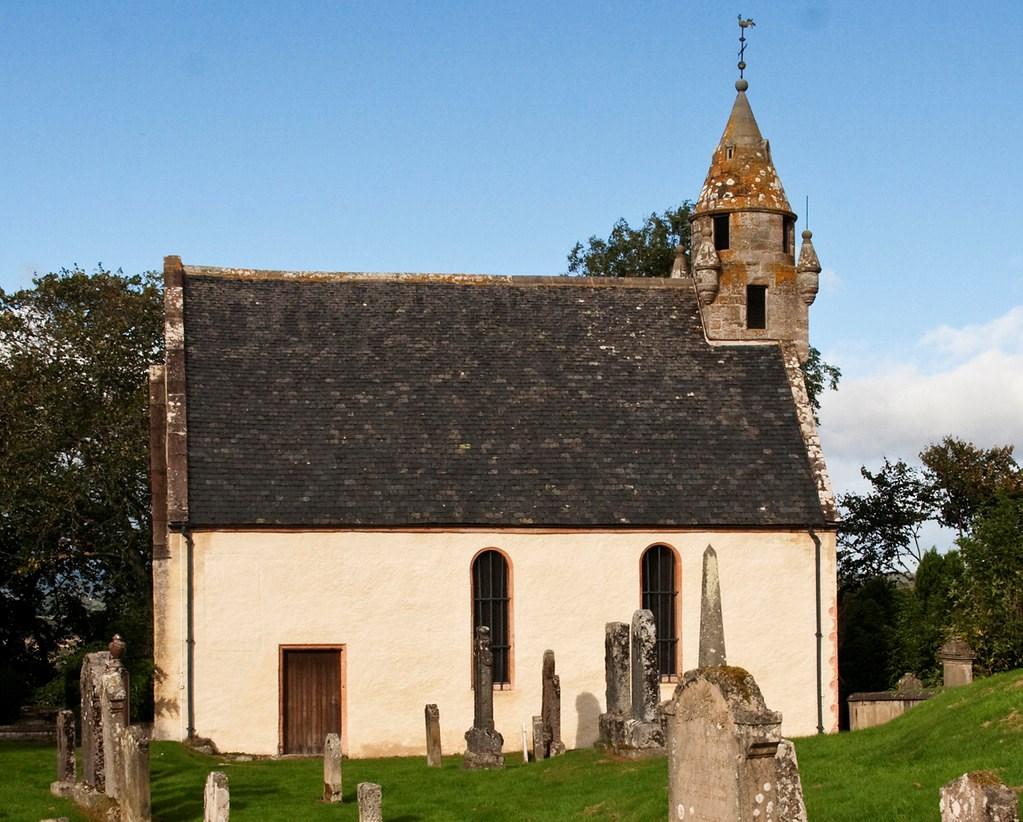
51
On our way towards Cawdor Castle, we pass Inverness Castle, where the statue of Flora Macdonald stands. She became famous for helping Bonnie Prince Charlie escape over the sea to Skye.
The current Inverness Castle is relatively new, dating from the 1800s, but this is the third castle on this site, the previous two castles were destroyed during fierce battles. The castle was, until recently, used as the courthouse in Inverness. It it is now being restored and will re-open as a tourist attraction in 2025.
Cawdor Castle is a great place to stop for lunch, it is one of the few Highland castles to remain intact after the Jacobite uprisings. This is somewhat surprising, as the Castle's location is not far from Culloden, or Auldearn, where individual battles took place.
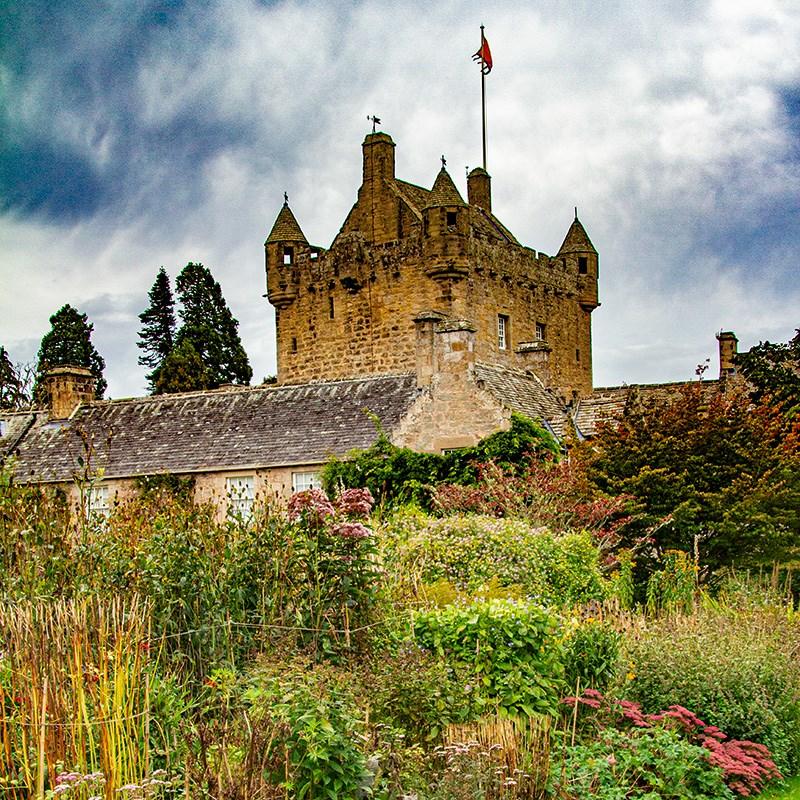
make our way back towards Inverness via Clava Cairns.
Clave Cairns is a 4000-year-old ancient burial site which three main cairns, two of which you canenter. The cairns are aligned in a South Westerly direction, so at the winter solstice, the sun lights up the inside of the cairns. The winter solstice was very important for the ancient people.
Diana Gabaldon took inspiration from Clave Cairns for her Outlander series of books and films, and many Outlander fans visit this place. It is here you can also see the cleft stone.
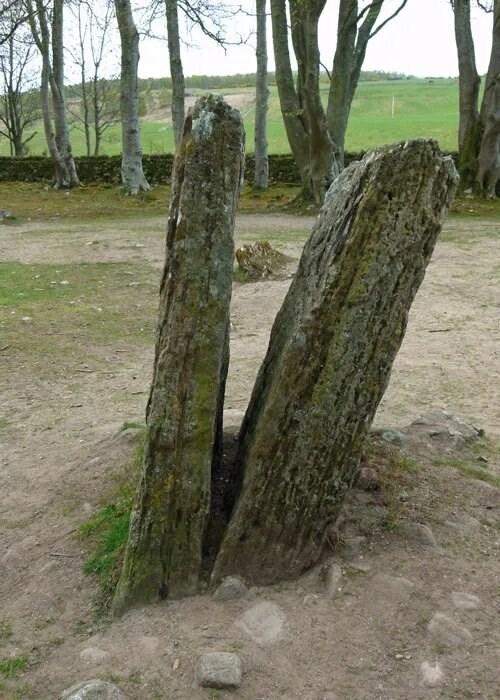
For centuries the Castle has been the home to the Thanes of Cawdor, and is still lived in today, the gardens and grounds are beautiful. There is even a 9hole golf course where visitors can play a round, it is an all par 3course though.
After lunch, and our visit to Cawdor, we start to
here for a photo opportunity. This is the largest Railway viaduct in Scotland with twenty-nine arches, the viaduct at Glenfinnan, where the Harry Potter steam train scene was filmed, has only twenty-three arches.

52
A couple of miles away from Clava is Culloden Battlefield, and as we make our way there we pass the Cumberland stone, it is said the Duke of Cumberland watched the battle from this stone.
The Battle of Culloden was the last fought battle on British soil, the battle took place on the 16th of April 1746, the result was to change the way of life in the Highlands forever.
Many people believe the battle was fought between Scotland and England, but this is not the case, the battle was between the Jacobites and the Hanoverians. It was a religious battle, the Jacobites wanted to restore the Catholic Stuart Dynasty to the throne, while the Government wanted to keep the Protestant House of Hanover.

We visit the museum and walk around the main areas of the battleground seeing the Clan gravestones, the Well of the dead, the memorial cairn, and Leanach cottage.
The time has caught up with us, it is time to head back to Invergordon port, and for me return my guests to their ship. The return journey takes approximately one hour, during which I tell my passengers, the adults at least, as the kids are sleeping!, the story of the Brahan seer and some of his prophecies.
They thank me for a lovely day, and I ask them if they wouldn’t mind writing a review for me of their day, which they said they would.
I hope you enjoyed reading my account of a day as a tour guide.
Highlander Private Tours have a number of set tours, but we are happy to design a bespoke tour should you wish.

Highlander Private Tours also manage bespoke tours on behalf of the Scottish Travel Society (STS), from Inverness, and Invergordon Port.
Please email, STSTours@mail.com
53
“It’s absolutely brill!! I can’t believe how much of the details are there, it’s honestly amazing! Thank you so, so much! My Mum is going to love it!” Karina M
“Awesome job! What can I say... First class.” Paul R
“
Chuffed beyond words with my Painting, Debs. You were an absolute joy to deal with.” Marion S
Browse my store https://deb-wilkinson-artist.myshopify.com

I welcome commissions - oils or pastel, of landscapes, animals, and other subjects, please email me for details


debwilkinson66@yahoo.com

54
Driving in Scotland
Questions about driving in Scotland are, not surprisingly, one of the top subjects presented to the Scottish Travel Society community.
In this article we hope to answer many of the most frequently asked questions.


Self-driving is a terrific way to see Scotland.
Scotland has an extensive road network that makes it easy to travel around the country. However, if you are planning a road trip, or are undertaking daily outings, there are several things you should know.
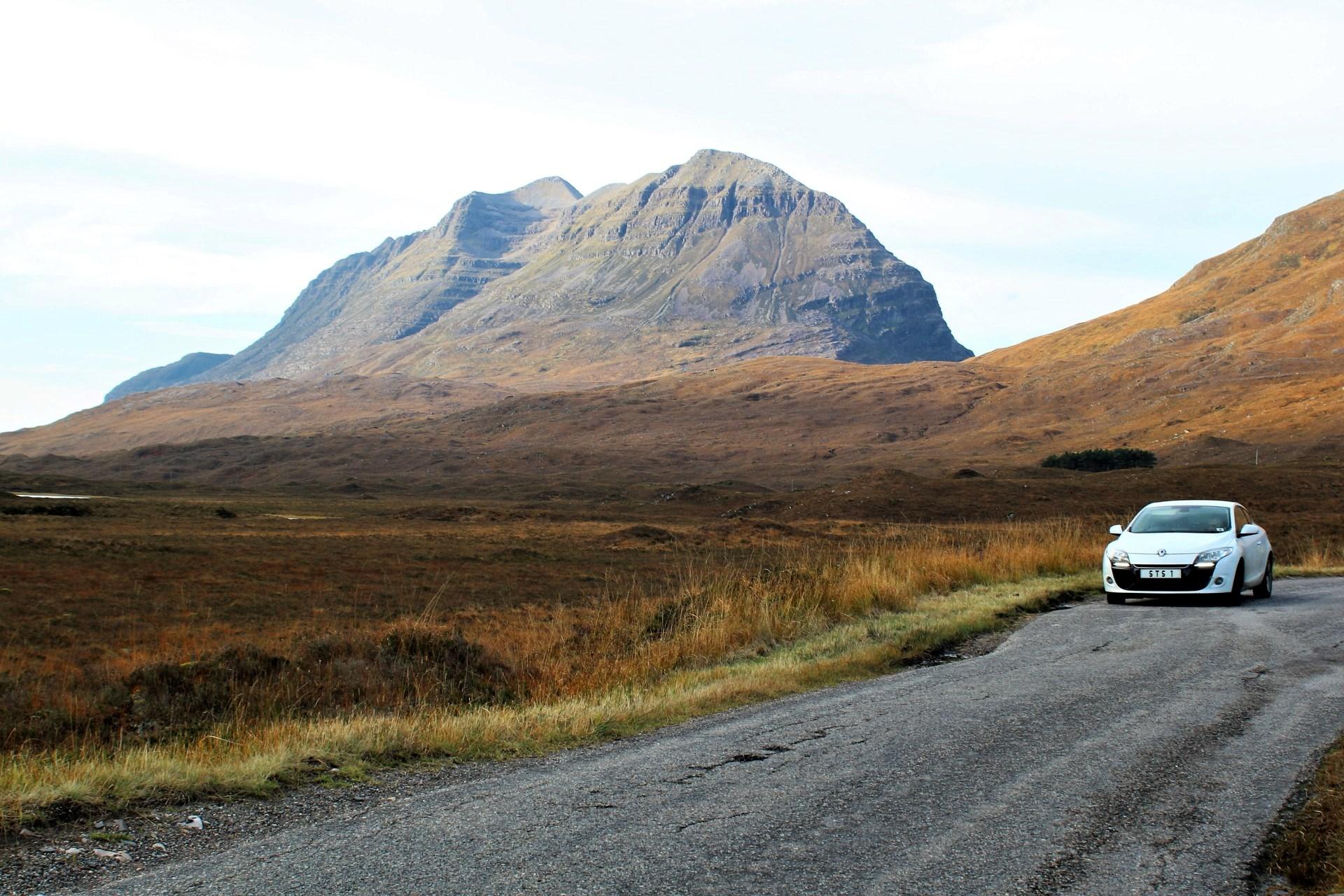
First things first, like the rest of the UK, we drive on the left-hand side of the road.
Road safety is taken very seriously and there are strict speed limits in place. The speeds limits will vary, depending what type of road you are driving on, but do not worry, the correct speed are clearly signposted.
While Scottish motorways make inter-city travel quick and easy, there are twelve National Tourist Routes, and the newly mapped North Coast 500. All can be explored with VisitScotland's Road Trips guide, although I doubt if you would want, or could, travel all these routes in a single visit.
These alternative driving routes will often take you a longer to get to your destination, but they will take you through some of Scotland's most awe-inspiring scenery.
If you venture further from the main routes, and I suggest you do, then you will undoubtedly find yourself driving along some of Scotland’s single-track roads.
55
Do not be daunted. These are often the roads which lead to the best vantage points, the most stunning scenery and vistas, and surprising destinations, many which are missed by those unwilling to stray from the rush and hubble-bubble of the main tourist routes.
Here is what you need to know
Always drive on the left-hand side of the road
SPEED LIMITS
Speed limits are well signposted. They are circular signs with black numbers (denoting the speed limit in miles per hour) on a white background with a red circle border. These limits a statutory and enforceable.
If there are no signposts, national speed limits apply.
National speed limits are also often denoted as a white circular sign with a black diagonal dash.

The National speed limits are,
MOTORWAYS & DUAL CARRAIGWAYS
70 mph for cars.
60 mph for cars towing caravans or trailers.
BUILT-UP AREAS
These are identifiable as areas where lampposts (Street lamps) are installed.
30 mph (Unless signposted otherwise, such as areas near schools where a 20mph restriction may be in place.
OUTSIDE BUILT-UP AREAS
60 mph for cars
50 mph) for cars towing caravans or trailers.
Full details can be found on the UK government's website,
https://www.gov.uk/speed-limits
DRIVING IN WINTER
Scotland’s coldest months tend to be December, January, and February, when the average maximum temperature reaches around 5°C (41°F). Freezing temperatures are common during the winter and snow falls during 15 to 20 days on average.
If you are you planning on driving in the winter months, it is best to be prepared and check the local weather forecast before setting off.
DRIVING HAZARDS
You might encounter some farm animals or wildlife, particularly when travelling on rural roads, so be observant, and adjust your speed accordingly. Wild deer are an unpredictable hazard, particularly at night. Commonly sheep sleep on the grass verges and roadsides at night.
You should always look and listen out for ambulances, fire engines, police, doctors, or other emergency vehicles using flashing blue, red, or green lights and sirens, or flashing headlights.
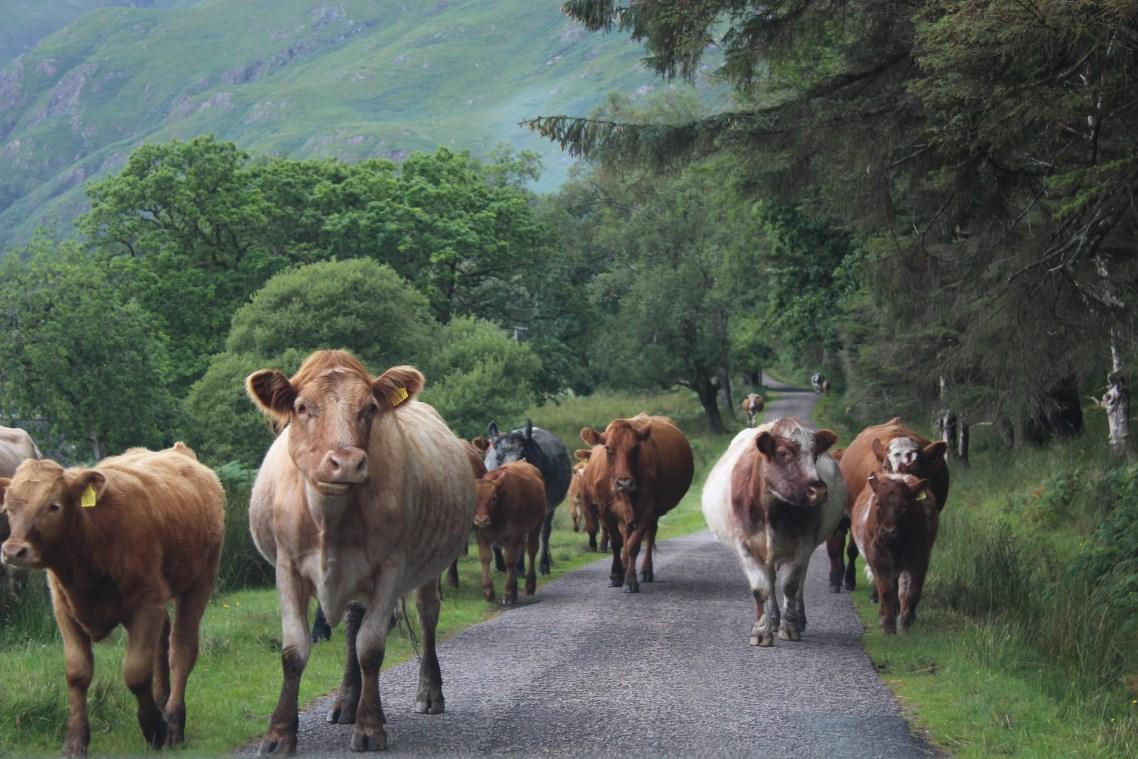
56
ROUNDABOUTS, ROADS, AND BRIDGES
Roundabouts are common in Scotland. Give way to vehicles from your right and turn left on entering the roundabout.
There are no toll roads or toll bridges in Scotland.
Some rural roads are single lane but have passing places so traffic coming in the opposite directions can pass safely, or the driver behind can overtake.
If the passing place is to the left, pull in and stop until the other vehicle(s) have passed. If the passing place is on the right, stop opposite, allowing the other vehicle(s) to use the passing place to go around you.
OTHER USEFUL INFORMATION
Seatbelts are compulsory for all drivers and passengers in the vehicle.
It is illegal to use a hand-held mobile phone while driving. You must also have proper control while using hands-free.
Children under 12 who are under 135 cm (4 ft 5 in) tall should use a child seat appropriate for their weight.
You can usually order child seats via the vehicle hire company you are using.
PETROL (FILLING) STATIONS
In the cities, you will often find 24-hour access at fuel stations.
In the countryside, there are fewer fuel stations, so it is best to keep your vehicle topped up if travelling in remote areas.
You may not always notice or recognise the more rural petrol pumps or filling stations, as illustrated in this photograph.
(The petrol pumps are the stainless-steel objects!)
Petrol stations provide unleaded petrol and diesel. Fuel is priced by the litre.
IS YOUR DRIVING LICENSE VALID FOR THE UK?
If you have a valid license issued in your home
country, you can drive any small vehicle, such ads a car or motorcycle, in the UK for up to 12 months.
To be sure check here,
https://www.gov.uk/driving-nongb-licence
DO NOT DRINK DRIVE IN SCOTLAND. (DUI)
Scotland has a zero-tolerance approach to drink driving
Driving under the influence of alcohol or drugs is taken very seriously in Scotland, as it is in the rest of the UK. There are heavy penalties for those found to be above the legal blood/alcohol/drug limit.
The current limit is:
22 microgrammes (mcg) of alcohol in 100 ml of breath

50 milligrammes (mg) of alcohol in 100ml of blood
67 milligrammes (mg) in 100 ml of urine.
RENTING/HIREING A VEHICLE
There are several companies you can hire a car, campervan, or motorhome from in Scotland.
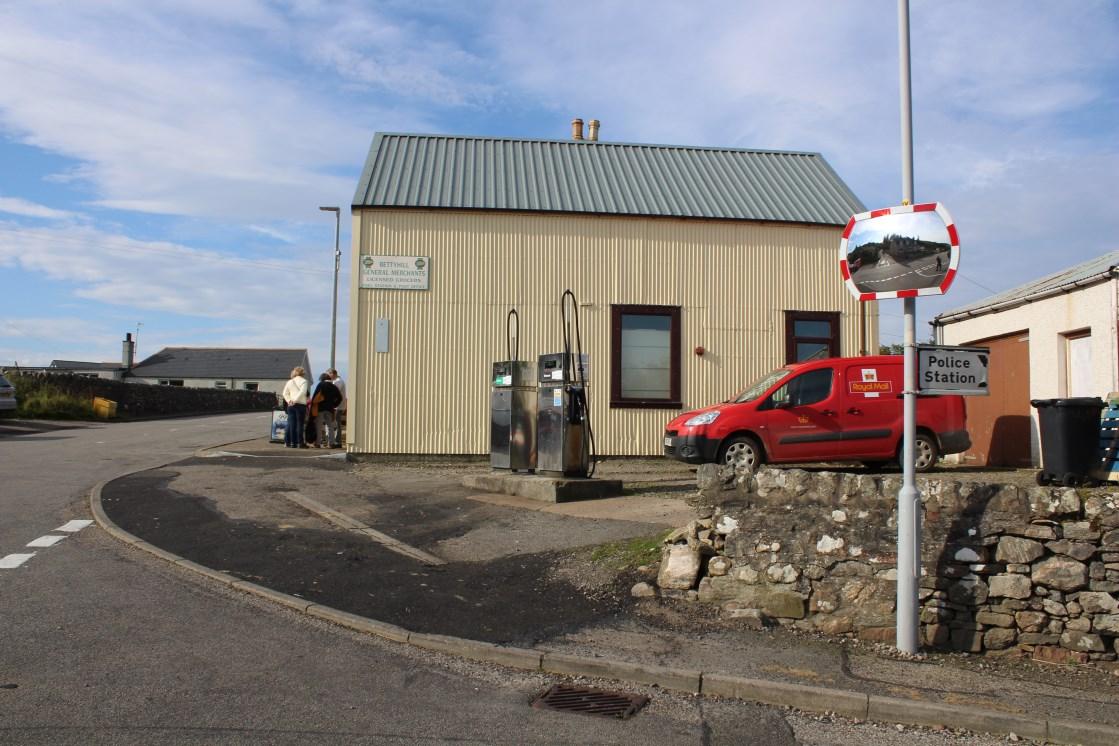
For cars and vans, the Scottish Travel Society suggest ‘Celtic Legend’, who have given excellent service to many of our member over the years.
STS members receive a 10% discount when mentioned on booking
Contact Celtic Legend,
https://www.celticlegend.co.uk/car-rental/
57

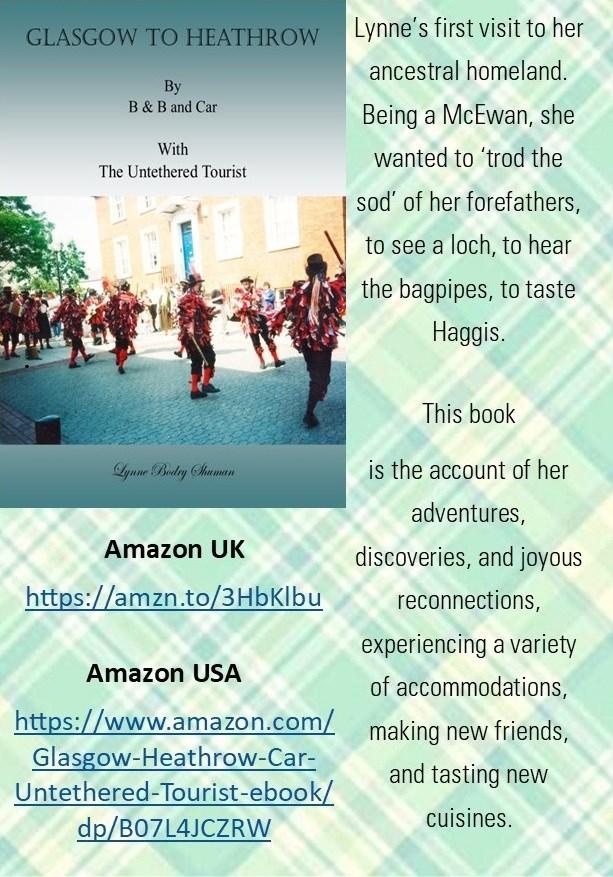

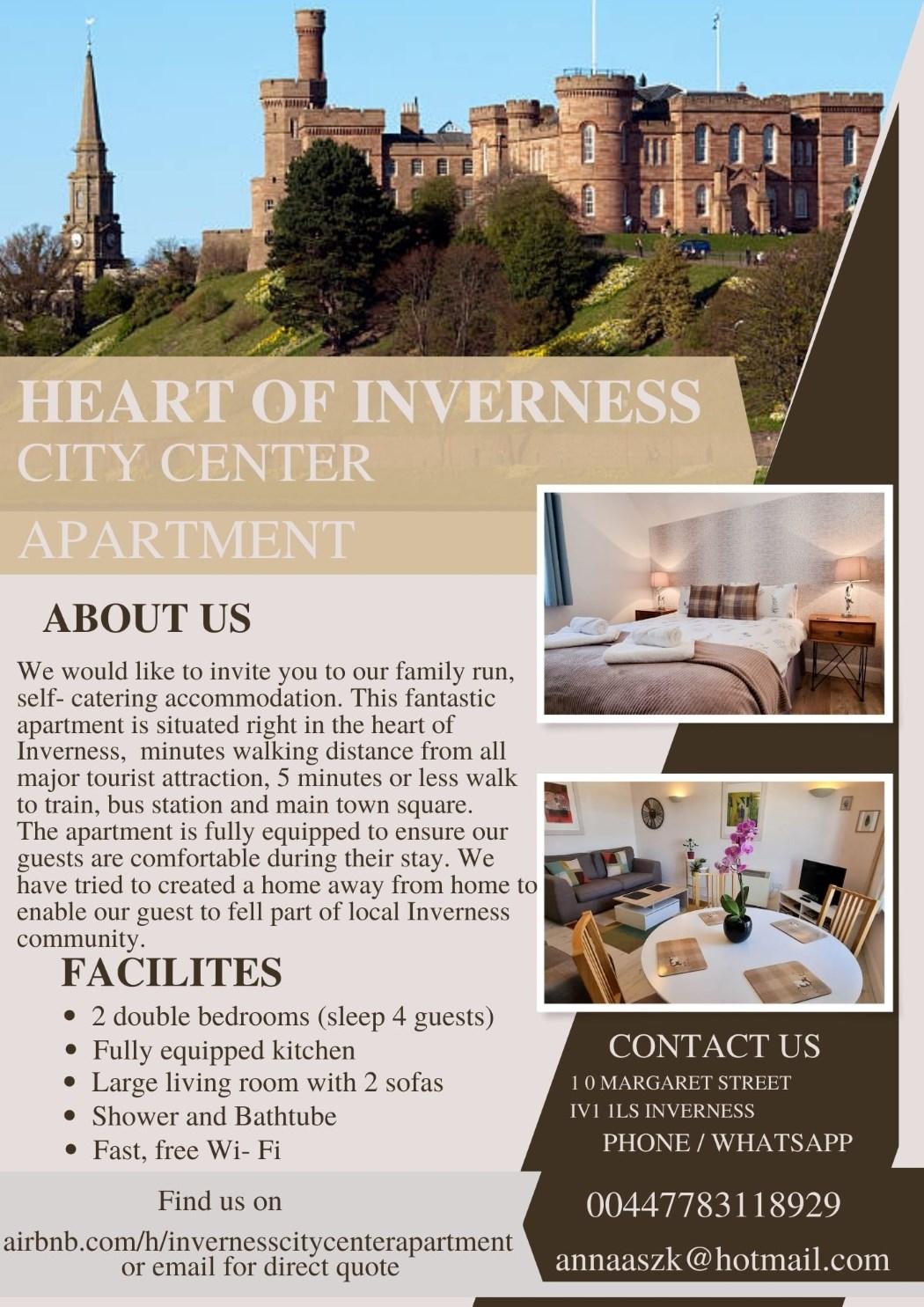
Unforgotten Highland Women
The stories of Highland women are celebrated in a new series of podcasts
A jewel thief, a witch, a doctor, and an inspirational teacher are just some of the stories of incredible Highland women revealed from museum archives. Unforgotten Highland Women is a short podcast series, recorded at live events across the Highlands of Scotland, about remarkable local women.
The stories of Highland women are celebrated in a new series of podcasts.
“Highland women who made a mark, challenged thinking, and had a presence both locally and sometimes internationally. Many of them have been forgotten.”

The programmes were commissioned by Museums & Heritage Highlands and XpoNorth Digital, which supports creative businesses.





The series, which is hosted by Pauline Moore, uses archive material to tell the stories of women from the Highlands.
The series was recorded by Pauline Moore, podcaster and owner of a twenty-two-year-old camper van.
Jewel thief Mary Marjory MacDonald, artist Margaret Swanson, and Orkney-born Beatrice Garvie, one of the UK’s first female general practitioner’s all-star in the series.
Nicola Henderson, heritage specialist at XpoNorth Digital, said:
“Over a year ago now, Nick Lindsay from Clyne Heritage Society approached Museums & Heritage Highland with the story of Caroline Ross, a powerful story of a brave young woman, a story that had been lost to time that he believed the world needed to hear.
This idea then came to XpoNorth and, with support from the team, went on a journey to discover the many

59
amazing stories of remarkable women from across the Highlands. I am delighted that we can finally tell these stories to the world and hope that these pilot episodes lead to people wanting to know more not just about these women, but about the many more amazing women from Highland history whose stories have been hidden for far too long.”
https://www.thebiglight.com/unforgottenhighlandwomen
EPISODE 1 MARY MARJORY MACDONALD ULLAPOOL (BORN 1884)

Shamed, shunned and notorious: the glittering life of an unexpected heroine, Mary Marjory. The only child of a successful Gaelic speaking fishing family, Mary found herself orphaned in her teens only to work her way up in London society and Europe...where she met her destiny as a successful jewel thief. Pauline talks to Siobhan Beatson, curator at Ullapool Museum and Morven Macdonald, curator Highland Museum of Childhood.
Recorded at: Highland Museum of Childhood, Strathpeffer


EPISODE 2 MEGAN BOYD FLY FISHER (BORN 1915)

Though she never fished herself, Megan Boyd is regarded as the finest tier of fishing flies in the world. Join us to hear about this extraordinary woman, why she has so many devotees and why now, she may be getting the recognition she deserves. Pauline talks to Nick Lindsay, author and chair of Clyne Heritage Society as well as members of the audience who knew Megan.
Recorded at: Brora Heritage Centre

60
EPISODE 3 CAROLINE ROSS (1904-1985)
Caroline Ross made the news in the 1930s for child murder and her case wasn’t what it seemed. The controversy turned a small Highland community upside down and the issues it churned up still resonate today. Join us as we walk through Caroline’s story and explore the deep mystery at its heart. Pauline talks to Nick Lindsay, author and chair of Clyne Heritage Society
Recorded at: Brora Heritage Centre
EPISODE 4 MARGARET SWANSON (BORN 1872)
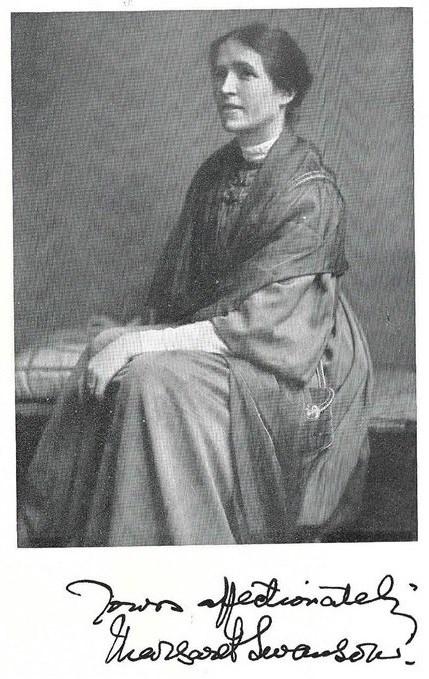

Join us as we unweave the beautiful tapestry of Margaret’s story - the daughter of a cobbler who became a seminal artist, associate of Rennie Mackintosh, who empowered women through the ‘Margaret Swanson System of Educational Needlework’. Teaching far and wide, Margaret broke the mould by inspiring and championing women’s independent creativity. Pauline talks to Muriel Murray who discovered the story of Margaret Swanson.
Recorded at: Castlehill Heritage Centre, Castletown
61
“Highland women who made a mark, challenged thinking and had a presence both locally, and sometimes internationally. Many of them have been forgotten.”
EPISODE 5 BEATRICE GARVIE (1872-1956)
They say a picture is worth a thousand words, and from travels in India to being one of the first woman to qualify as a GP Beatrice Garvie spent 15 years in North Ronaldsay and she was never without her camera - capturing local life on the island. Orkney Doctor and photographer, we hear more about the incredible life of this turn of the century polymath. Pauline talks to Fiona Sanderson, artist and researcher as well as special guests linked to Beatrice directly.
Recorded at: Orkney Archive Centre

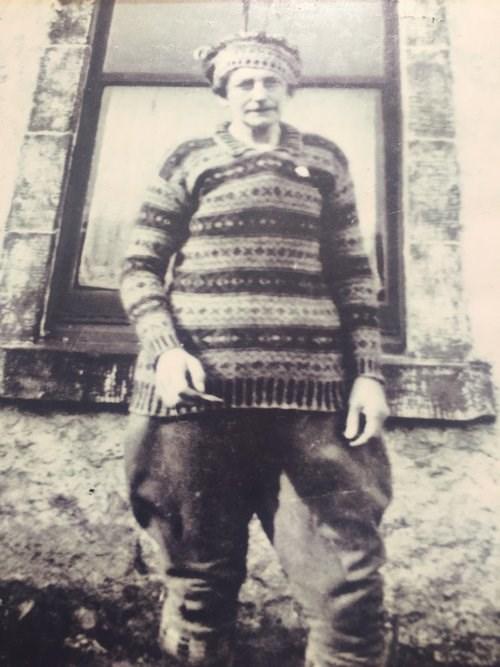

EPISODE 6 ISOBEL GOWDIE (17TH CENTURY)
Yes, I am a witch.

What makes Isobel different than others who also were accused of witchcraft? She confessed without the usual torture treatment. Regarded as a great storyteller, her own story has become a thing of legend gracing the pages of books, music and the halls of academia...until now, we bring her story to you. Pauline talks to Melissa Davies, curator of Nairn Museum; Andrew Grant MacKenzie, Highland historian; Helen Wright who designed the mural to Isobel on display in Auldearn and Ash William Mills - author of The Black Book of Isobel Gowdie.
Recorded at: Nairn Museum, Nairn
62
Finding Daisy
An article by Beth


We all have our little harmless obsessions, for me, it is Highland Cows, those straggly, hairy, sweet ‘Heilan Coos’ we all adore.
This day, I was on a mission, and I would not take no for an answer. I needed to find one of these wee, or not so wee, beasties.
I was looking for ‘my Daisy.’
This saga started a full year ago, and now I was back on the island, nothing was going to stop me from finding Daisy.
Nothing.
It all began back on November 19, 2021.

63
This
is my story …
The weather was dreich the day we madea left-hand turn up the road to the secluded, some call it a secret beach, of Hushinish on the Island of Harris, in the Outer Hebrides.
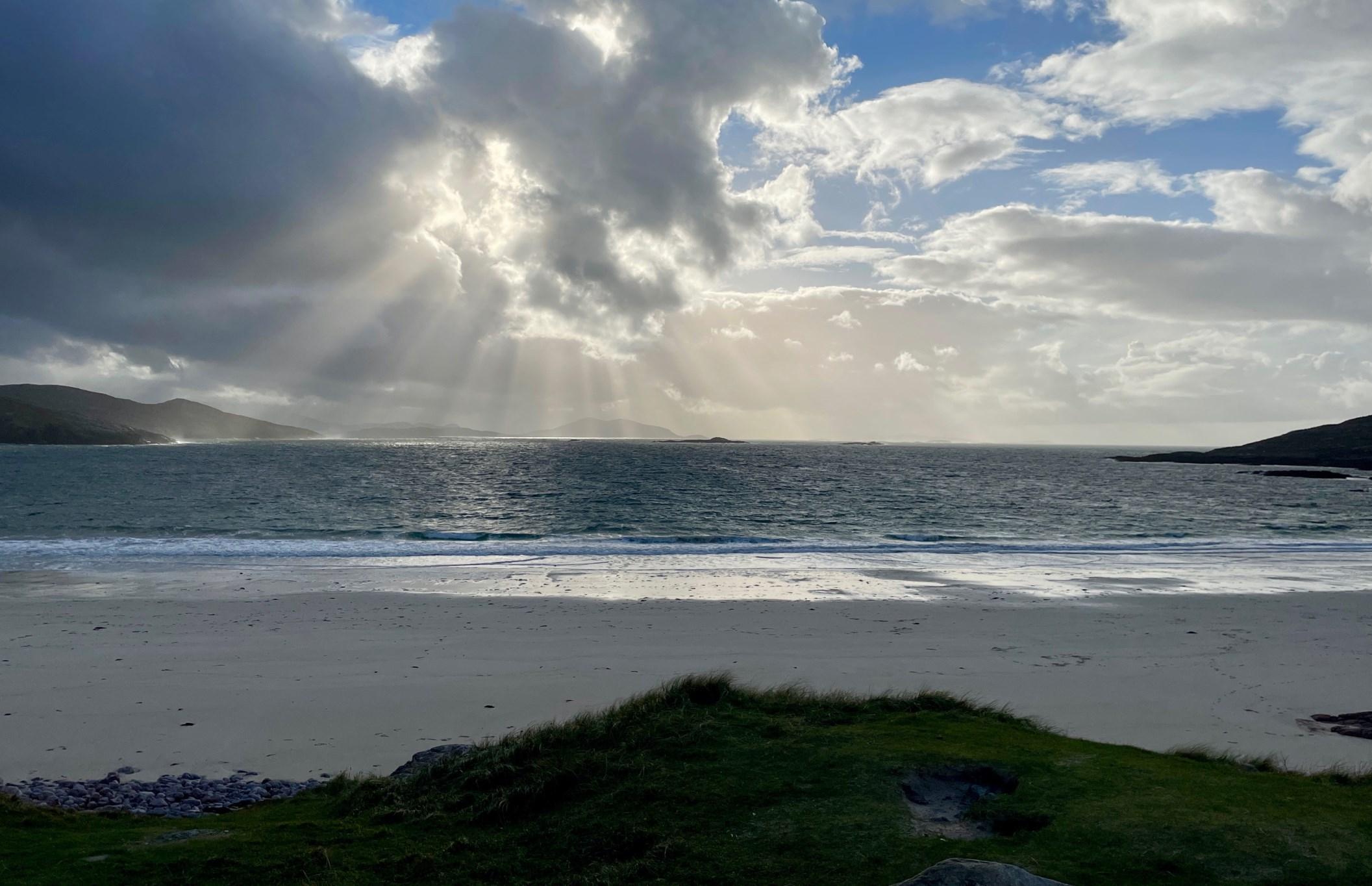
The day was chilly, damp, cloudy, and drizzly. The burns were surging, water tearing down the

hillsides and, eventually, into the sea. The sound of these rushing streams seemed to come from everywhere.
The wind carried the scent of salt from the sea. I inhaled deeply, allowing the fresh, tangy air to rejuvenate my soul.
The road to Hushinish is an eighteen-mile long, twisting, undulating single-track road which, unexpectedly and joyfully, led us to a herd of Heilan Coos who were grazing on the hillsides, some with calves close by, others simply staring into the distance in a mellow daydream as they often do.
Then there was my Daisy, she stood stock still, smack in the middle of the road. She was sodden, muddy, and had a sad look on her face… oh, and an utter stubbornness not to move from the middle of this very narrow single-track road,
despite the occasional car, very slowly squeezing past her.
Daisy, at the time, was a young female Duncoloured Heilan Coo, and I instantly fell in love with her.
She was beautiful.
Daisy was on the small side, yet showed no fear of people. I later learned she was just a youngster.
I got out of the car to have a chat with Daisy, and I thought maybe I could pet her.
64
I was so excited, I felt like a child who found a Golden Ticket from Willie Wonka! only this was so much better than any chocolate factory could be.
To me, at that time, Daisy was just another cow, a beautiful one, however. I bestowed the name Daisy on her later.
Paul, my traveling companion, left me alone on the road with Daisy as he carefully maneuvered the car past Daisy, parking a short distance further along the road.
I had my phone and was filming while having a chat with her. Daisy has a beautiful face, even when she is sopping wet, she has those wonderful big brown eyes with long eyelashes, beautiful upward-curved horns with black tips, and the cutest dark brown nose. Her hooves and legs were entirely covered with cloying mud.
I felt like a child who found a Golden Ticket from Willie Wonka!
Daisy walked a step or two toward me, yet I kept a safe distance. Although Heilan coos are known for being relatively docile animals they can be unpredictable at times, especially now when there were many young calves around, of whom the mothers are very protective.

I then thought, standing in the middle of the road filming Daisy may not be such a good idea after all,
hoping I would not get gouged for my stupidity, so decided to get back into the car.
As I gingerly made my way past Daisy, giving her a wide berth, I stopped filming. That is a moment I will regret for the rest of my life.
See my video on Facebook HERE

Five seconds after I stopped filming, and thinking might die, Paul walked straight up to Daisy and petted her like she was a giant puppy, and she appeared to love the human touch. Oh, why did I stop filming just then? It is a moment I will never get to capture again. Something I will forever regret.
Daisy was affectionately given her name by me months after the trip when I created a special Snapfish book of this grand adventure.
65
Over the forthcoming year, Paul and Italked about Daisy many times, and we always had a giggle. Daisy left a deep impression on my heart. I know it sounds silly, but it was a truly special moment for me. I believe any true coo lover will understand how I could feel this way.
single-track road, back to Hushinish Beach to see if we could spot Daisy.
A long shot I know, but something I was determined to try.

That day, the weather proved even more miserable than the previous year. A dreadful storm blew, and it was raining buckets once more.
For some reason, the universe, or perhaps a higher power was shining down upon us, or maybe it was simply sheer luck of the Scottish weather, the rain stopped, and the sun came out while on our quest to find Daisy.
When we arrived at the hillside, the burns were raging again. Again, I filled my lungs with fresh salt air. It felt wonderful, as did the warmth of the sun shining on my face.
We pulled the car over to the side of the road at the top of the hill, about where we saw Daisy last time. There were Heilan coos everywhere.
But where was my Daisy?
Was she still here?
Now, fast forward to November 8, 2022, Paul and I returned to The Hebrides, planning to visit many places we failed to see in the previous year. Paul and I were talking about Daisy for a full year, and I was going to see if she was still there, come hell or high water as she left such an impression on me. It took some arm twisting, but Paul agreed to make the eighteen-mile journey, which takes around forty-five minutes on that
Could she have been sold, or could the very worst have happened, did she end up on someone’s dinner plate?

A thought I chased quickly from my mind.
This time, there were no coos blocking the road, they were all happily grazing on the hillside, so my search began. I was on a mission to find the coo who had brought so much joy into my life.
After several minutes of searching amongst the

66
herd scattered about the hillside, my heart leapt with joy.
I found Daisy.
Once I saw her sweet face, I knew it was her.
I travelled over four thousand miles to find a coo who touched my heart and brought me so much happiness.
I was overjoyed.
Daisy had grown, of course, but she was still not huge. Her coat was much thicker than the previous year and beautiful. She was contentedly grazing on the hillside with the other coos.
Daisy has a very pretty face, different from the one other coo with her colouring. This time I was unable to get as close to her as on the first occasion, yet I was thrilled to know my sweet Daisy was still here.
My mission was complete.

I was beyond happy, and so thrilled to see Daisy looking so well. I would like to find the farmers who own her and share my story with them. Maybe, just maybe, they are reading this now?
If you visit Hushinish Beach, then please look for sweet Daisy. I hope she will still be on that hillside, just where Hushinish beach comes into view from the road.
If you take a photo of her, please send it to me.
You could also post images of my ‘Daisy’ on the Scottish Travel Society Facebook wall.
I would be overjoyed.
If I am ever lucky enough to return to Harris, I will certainly go in search of Daisy once more.
Thank you for reading ‘Finding Daisy’.

67
Every summer, I visit the Scottish Prince at his castle high on a hill outside Crieff. We dine on haggis and tatties and neeps –I drink water with mine and the Prince sips at a peaty peppery dram. Then it’s time for the dance.
O Scottish Prince, the heathery air sweetens the night. Bats hang upside down in the pines like lamps waiting for light. Ask me, ask me to dance to the skirl o’ the pipes.
All the girls are in dresses. The boys are in kilts, but no boy’s so fine as the Prince in his tartan pleats. I wait for a glance from the Prince, for the chance to prance or flounce by his side, to bounce hand in hand down the Gay Gordon line. Och, the pleasure’s a’ mine!
O Scottish Prince, the heathery air sweetens the night. Bats hang upside down in the pines like lamps waiting for light. Ask me, ask me to dance to the skirl o’ the pipes.
At the end of summer, I say goodbye to the Scottish Prince and catch a train to the South, over the border, the other side of the purple hills, far from the blue and white flag, waving farewell
Carol Ann Duffy
From The Good Child's Guide to Rock 'n' Roll
https://amzn.to/3iGV1a5
from the castle roof. The Prince will expect me back again next year – here’s a sprig of heather pressed in my hand as proof.
O Scottish Prince, the heathery air sweetens the night. Bats hang upside down in the pines like lamps waiting for light. Ask me, ask me to dance to the skirl o’ the pipes. Ask me, ask me, ask me to dance to the skirl o’ the pipes.
Carol Ann Duffy is an award-winning Scottish poet who is best known for writing love poems that often take the form of monologues.
Duffy is a professor of contemporary poetry, and the creative director of the Writing School at Manchester Metropolitan University.

68
Focus on Elgin


Elgin (Scots: Ailgin; Scottish Gaelic: Eilginn) is the largest town along the Moray coast, sitting inland from pretty coastal villages including Hopeman, Lossiemouth, and Covesea. Located in the Speyside whisky region, Elgin is within easy travelling distance of several distilleries. The town itself has museums, architecture, and historical sites to visit.
Elgin is first documented in the Cartulary of Moray in 1190 AD. It was created a royal burgh in the 12th century by King David I of Scotland, and by that time had a castle on top of the presentday Lady Hill to the west of the town. The origin of the name Elgin is likely to be Celtic. It may derive from 'Aille' literally signifying beauty.
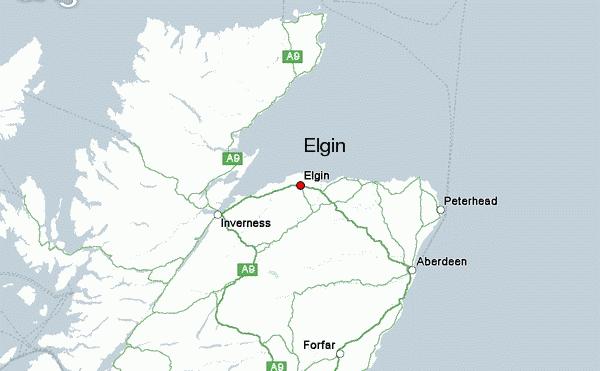
The modern town straddles the River Lossie, with the suburbs of Bishopmill to the north, and New Elgin to the south. The town originated to the south of the River Lossie on the higher ground above the floodplain where the town of Birnie is today. The church of Birnie Kirk was built in 1140 and serves the community to this day.
When Daniel Defoe toured Scotland in 1717, he visited Elgin and said:
“
In this rich country is the city, or town rather, of Elgin; I say city because in antient time the monk’s claim'd it for a city; and the cathedral shews, by its ruins, that it was a place of great magnificence. Nor must it be wonder'd at, if in so pleasant, so

69
Elgin (Scots: Ailgin; Scottish Gaelic: Eilginn) is the largest town along the Moray coast, sitting inland from pretty coastal villages including Hopeman, Lossiemouth, and Covesea.
rich, and so agreeable a part of the country, all the rest being so differing from it, the clergy should seat themselves in a proportion'd number, seeing we must do them the justice to say, that if there is any place richer and more fruitful, and pleasant than another, they seldom fail to find it out. As the country is rich and pleasant, so here are a great many rich inhabitants, and in the town of Elgin in particular; for the gentlemen, as if this was the Edinburgh, or the court, for this part of the island, leave their Highland habitations in the winter and come and live here for the diversion of the place and plenty of provisions; and there is, on this account, a great variety of gentlemen for society, and that of all parties and of all opinions. This makes Elgin a very agreeable place to live in, notwithstanding its distance, being above 450 measur'd miles from London, and more, if we must go by Edinburgh.”
The Morayshire Railway was officially opened in ceremonies at Elgin and Lossiemouth on 10 August 1852, the steam engines having been delivered to Lossiemouth by sea. It was the first railway north of Aberdeen and initially ran only for five and a half miles, between Elgin and Lossiemouth. It was later extended south to Craigellachie. The Great North of Scotland Railway took over the working of the line in 1863 and bought the company in 1881 following the Morayshire Railway's return to solvency from crippling debt.
branches of the Bank of Scotland, the British Linen Company, Caledonian, Commercial, North of Scotland, Royal and Union Banks, and the National Securities Savings Bank, offices or agencies of 48 insurance companies, five hotels, and a newspaper.

The town was becoming prosperous, and by 1882 it had a Head Post Office with a savings bank, insurance, and telegraph departments, and
Permo–Triassic rocks, rare in Scotland, are commonly found around Elgin. These are composed of aeolian sandstone formed when this area was subjected to desert conditions.
Quarry Wood, on the town's edge, has a formation nicknamed Cuttie's Hillock which produced the internationally known fossils called the Elgin Reptiles. In the Elgin district, boulders belonging to the lowest group of Jurassic strata, Oxford clay, and chalk are found both in glacial deposits and on the surface of the ground. The largest of these deposits is at Linksfield, where limestone and shale lie on boulder clay. There is a large hill in Elgin's town centre, often viewed as the highlight of the Elgin tourist trail.
Glenmoral, Linkwood, and Miltonduff distilleries are all within a stone’s throw of Elgin, there are many more within a 15-mile radius. The Speyside whiskies are known for their clean, crisp nature, all using waters from the sparkling Spey River that runs north through Moray and into the Moray Firth.
70
Where the Spey reaches the Firth, in Spey Bay, just 13 miles from Elgin, the famous Moray Firth bottlenose dolphins come so close to land that they can be seen leaping from the sea right from the shore. The Whale and Dolphin Conservation centre at Spey Bay makes a great place to learn more about these iconic animals.
A three-acre Biblical Garden is open during summer and free to enter and provides a welcome escape from busy streets. A short distance from Elgin lies Pluscarden Abbey, and Duffus Castle, both interesting historical sites.
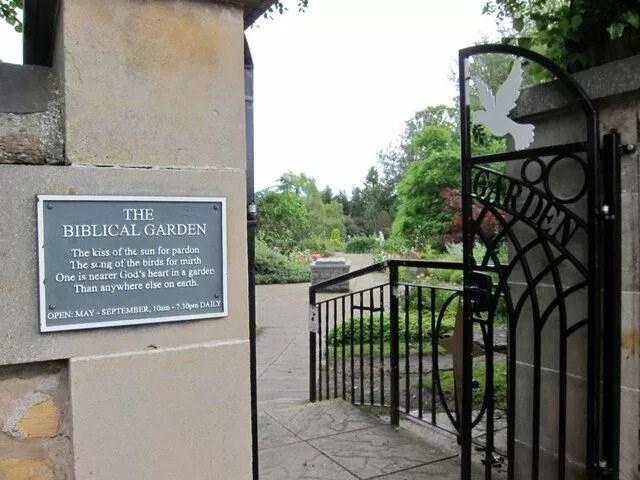
Along the coast to the west of Elgin is Cummingston, where sandstone cliffs and sea stacks have been sculpted from the coast by the force of the sea. This is a popular area for climbers, but even if you are keeping your feet firmly on the ground, is a fascinating site to visit.
Each January, a truly unique event takes place at Burghead, eight miles from Elgin on the coast. ‘The Burning of the Clavie’, where a tar-filled cask is carried through the village and used to light a huge bonfire on the headland. When the tar-filled cask breaks open, residents would traditionally take a burning piece with which to light their hearth.
A mysterious black cat named the ‘Kellas Cat’ was named after the village of Kellas, near Elgin, where it was first discovered. It was once believed this was a mythical big cat, but examination revealed that it is a melanistic hybrid between the Scottish wildcat and domestic cats.
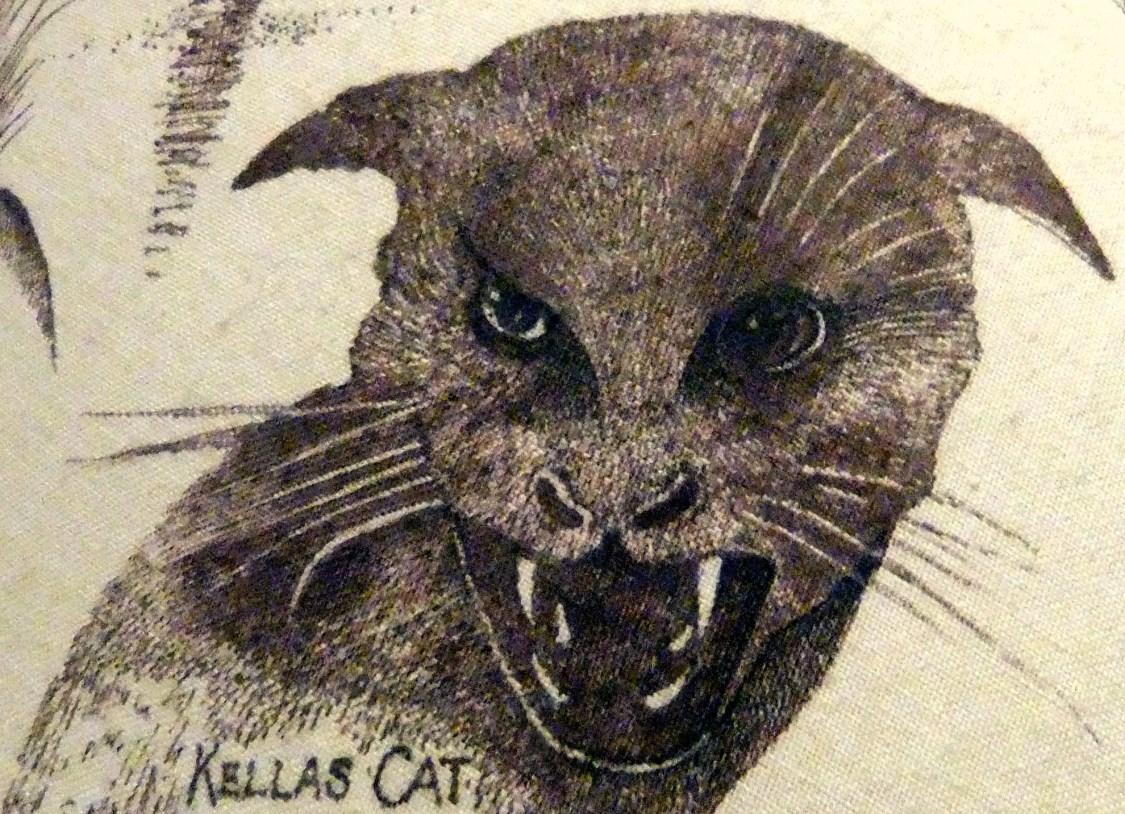
In Elgin itself, visitors will find museums, shops, and amenities. Elgin Cathedral, ruined but wellpreserved, is an impressive structure that was once known as the ‘Lantern of the North’.
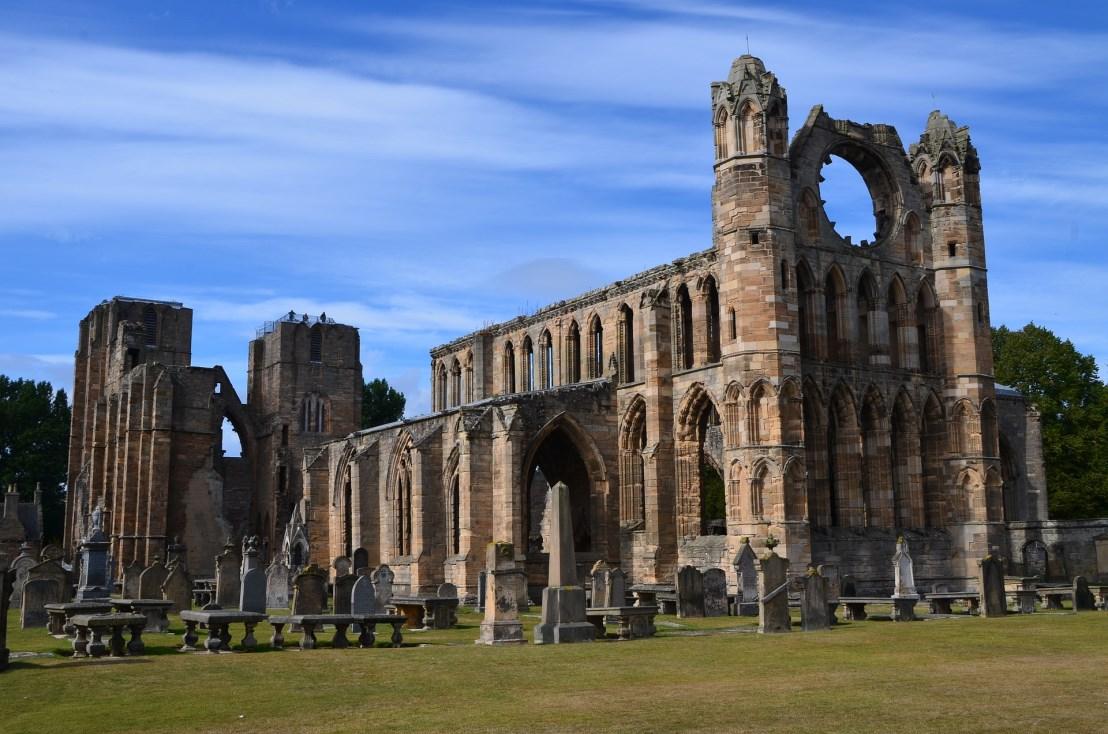
A carved Pictish stone at Golspie of a cat standing atop a salmon is thought to depict a Kellas Cat, about observations of it hunting salmon while swimming in a river.

Keep your eyes peeled when you visit!

71
The hills in the Hielands are bonnie, Wi' the licht an' the shadow at play; An' the winds that mak' redder the heather
Far up on the cliff an' the brae.
The white clouds are floatin' abune them, Like snawdrifts that never can fa',

The hills in the Hielands are bonnie, The hills in the Hielands are braw!
by Alexander Anderson (1845-1909)
Portobello Beach Edinburgh ©PWPhotography2022





































































































 An article by Dana
An article by Dana









































































